The 50 Best Albums of 2022
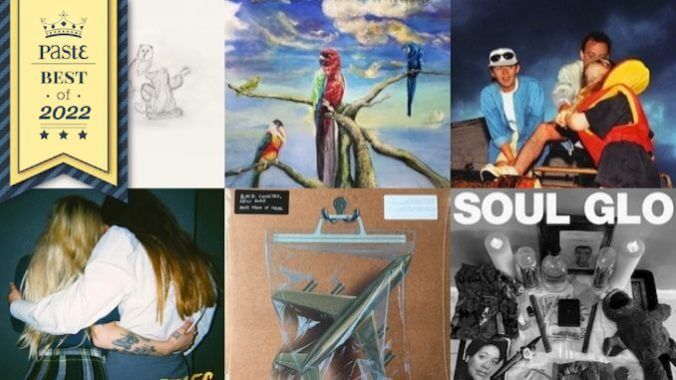
This marks the 20th time Paste has released a Best Albums of the Year list, and as always, it’s an opportunity for discovery. It’s a time to learn what albums we might have overlooked as our music writers—who’ve been digging through a wide spectrum of releases all year—vote for their favorites. It’s a time to start discussions among our readers on Facebook and Reddit about what we may have missed or overrated. It’s a time to celebrate the artists who’ve worked hard to create something new and unique for us to enjoy. But most of all it’s a time for all of us to look back at 12 months of music-making and hopefully find some new favorites. So take a look at our 50 Best Albums of 2022 and give them a listen, knowing that there’s something about each of these releases that elevated them onto this list.
Listen to Paste’s Best Albums of 2022 playlist on Spotify here.
50. Björk: Fossora Like a mushroom, Fossora arrives with an outer layer of dirt worth scrubbing away to get to the delights inside. The album’s often-baritone sound at first veils it in a muddy shroud: Modulated vocals sometimes substitute for percussion or bass, which can make for a disorienting listen. At other times, bass clarinet—a first-time instrument for Björk, known for building albums from new instruments—appears where you might expect higher-pitched orchestration. It sounds stern and miry, which is surprising since Björk has described the album’s music and mushroom imagery as fun, introducing a disconnect. But the handful of songs that detour from this palette and incorporate the hard techno subgenre gabber—courtesy of contributions from Indonesian duo Gabber Modus Operandi—are immediately a huge joy. —Max Freedman
Like a mushroom, Fossora arrives with an outer layer of dirt worth scrubbing away to get to the delights inside. The album’s often-baritone sound at first veils it in a muddy shroud: Modulated vocals sometimes substitute for percussion or bass, which can make for a disorienting listen. At other times, bass clarinet—a first-time instrument for Björk, known for building albums from new instruments—appears where you might expect higher-pitched orchestration. It sounds stern and miry, which is surprising since Björk has described the album’s music and mushroom imagery as fun, introducing a disconnect. But the handful of songs that detour from this palette and incorporate the hard techno subgenre gabber—courtesy of contributions from Indonesian duo Gabber Modus Operandi—are immediately a huge joy. —Max Freedman
49. Kevin Morby: This Is a Photograph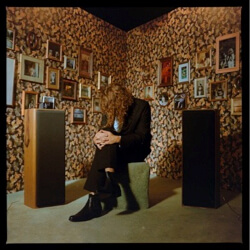 Memphis makes beautiful music. It’s a place that has endured much pain, too. A climbing crime rate and an ugly civil rights history give it a bad rap. But it’s like any other place, really—both good and bad, beautiful and grotesque. So it’s fitting that Memphis is the backdrop for Kevin Morby’s new album This Is a Photograph, in which a series of highs and lows blur against the very American sounds of folk, rock, gospel and blues, plus Morby’s own je ne sais quoi. Whether Photograph is Morby’s best album is hard to say just now, but it certainly ups his already stellar batting average. Morby doesn’t just mention Memphis on nearly every song on the album, but he also actually pieced the record together and recorded some of it in the Tennessee metropolis. As he mentions on the woefully nostalgic “It’s Over,” he brainstormed ideas and put them to tape in a makeshift recording studio “up in the Peabody, room 409.” There, posted up in the iconic Peabody Hotel, after his father had a health scare in early 2020 and then got back on his feet, Morby fleshed out ideas in a state of emotional openness. On the resulting album, his lyrical musings about family, love and country have never sounded clearer. —Ellen Johnson
Memphis makes beautiful music. It’s a place that has endured much pain, too. A climbing crime rate and an ugly civil rights history give it a bad rap. But it’s like any other place, really—both good and bad, beautiful and grotesque. So it’s fitting that Memphis is the backdrop for Kevin Morby’s new album This Is a Photograph, in which a series of highs and lows blur against the very American sounds of folk, rock, gospel and blues, plus Morby’s own je ne sais quoi. Whether Photograph is Morby’s best album is hard to say just now, but it certainly ups his already stellar batting average. Morby doesn’t just mention Memphis on nearly every song on the album, but he also actually pieced the record together and recorded some of it in the Tennessee metropolis. As he mentions on the woefully nostalgic “It’s Over,” he brainstormed ideas and put them to tape in a makeshift recording studio “up in the Peabody, room 409.” There, posted up in the iconic Peabody Hotel, after his father had a health scare in early 2020 and then got back on his feet, Morby fleshed out ideas in a state of emotional openness. On the resulting album, his lyrical musings about family, love and country have never sounded clearer. —Ellen Johnson
48. Earl Sweatshirt: SICK! SICK! maintains Earl Sweatshirt’s slowly revealing demeanor, but gives us some of the most clearheaded raps of his career. On “2010,” he talks about his relationship with his mom (“’03, momma rockin’ Liz Claiborne / Had her stressin’ up the wall playin’ Mary J. songs / Rainy day came, couldn’t rinse the stains off”), UCLA Law Professor Cheryl Harris, alluding to the drug and behavioral problems he had that year as Odd Future was blowing up. Backed by Black Noi$e’s potent production, which sounds like walking on gravelly sand at the beach, “Visions” features some of the most upfront lyricism we’ve ever heard from Earl, with him telling us, “I just be weary of self.” Being Earl Sweatshirt isn’t just protecting yourself from the public, but also being self-conscious because of your own inner demons and pain. —Jayson Buford
SICK! maintains Earl Sweatshirt’s slowly revealing demeanor, but gives us some of the most clearheaded raps of his career. On “2010,” he talks about his relationship with his mom (“’03, momma rockin’ Liz Claiborne / Had her stressin’ up the wall playin’ Mary J. songs / Rainy day came, couldn’t rinse the stains off”), UCLA Law Professor Cheryl Harris, alluding to the drug and behavioral problems he had that year as Odd Future was blowing up. Backed by Black Noi$e’s potent production, which sounds like walking on gravelly sand at the beach, “Visions” features some of the most upfront lyricism we’ve ever heard from Earl, with him telling us, “I just be weary of self.” Being Earl Sweatshirt isn’t just protecting yourself from the public, but also being self-conscious because of your own inner demons and pain. —Jayson Buford
47. Cheekface: Too Much to Ask It’s a good week to be a Cheekfreak: On Tuesday, Los Angeles trio Cheekface surprise-released their third album, Too Much to Ask, the 11-track follow-up to last year’s acclaimed Emphatically No. Cheekface wrote their new record across the past couple of years, and recorded most of it in 2022. The LP features their 2021 tracks “We Need a Bigger Dumpster,” “Next to Me (Yo Guy Version)” and “Featured Singer,” as well as this summer’s “Pledge Drive.” It also features the band’s first ballad, a prominent Moog melody, their usual bounty of tweet-worthy lyrics (e.g., “When life hands you problems, make problem-ade”), and the sounds of “pianos, Casio keyboards, cowbells, staple guns, a stainless steel ashtray, an old vinyl suitcase [and] a clanky folding chair,” per a press release. —Scott Russell
It’s a good week to be a Cheekfreak: On Tuesday, Los Angeles trio Cheekface surprise-released their third album, Too Much to Ask, the 11-track follow-up to last year’s acclaimed Emphatically No. Cheekface wrote their new record across the past couple of years, and recorded most of it in 2022. The LP features their 2021 tracks “We Need a Bigger Dumpster,” “Next to Me (Yo Guy Version)” and “Featured Singer,” as well as this summer’s “Pledge Drive.” It also features the band’s first ballad, a prominent Moog melody, their usual bounty of tweet-worthy lyrics (e.g., “When life hands you problems, make problem-ade”), and the sounds of “pianos, Casio keyboards, cowbells, staple guns, a stainless steel ashtray, an old vinyl suitcase [and] a clanky folding chair,” per a press release. —Scott Russell
46. Sharon Van Etten: We’ve Been Going About This All Wrong Praising Sharon Van Etten for making “intensely personal” albums is looking at things the wrong way around. Any artist can do that. What sets Van Etten apart is her ability to make albums that feel intensely personal for her listeners—as if she’s giving voice to your inner life, rather than her own. Her sixth album is a loose song cycle that encompasses how it feels to balance work, motherhood and intimacy in a time of roiling uncertainty. That’s a lot to take on, but she nails it: The 10 songs on We’ve Been Going About This All Wrong land hard and, like her best work, take on the meanings her listeners need. Like Remind Me Tomorrow, there’s a wide array of sounds here, from pastoral tunes built around acoustic guitar to synth-heavy jams that clank and snarl like some infernal machine. The difference is that Van Etten has a tighter rein on these songs, giving them a feeling of wildness barely held in check. —Eric R. Danton
Praising Sharon Van Etten for making “intensely personal” albums is looking at things the wrong way around. Any artist can do that. What sets Van Etten apart is her ability to make albums that feel intensely personal for her listeners—as if she’s giving voice to your inner life, rather than her own. Her sixth album is a loose song cycle that encompasses how it feels to balance work, motherhood and intimacy in a time of roiling uncertainty. That’s a lot to take on, but she nails it: The 10 songs on We’ve Been Going About This All Wrong land hard and, like her best work, take on the meanings her listeners need. Like Remind Me Tomorrow, there’s a wide array of sounds here, from pastoral tunes built around acoustic guitar to synth-heavy jams that clank and snarl like some infernal machine. The difference is that Van Etten has a tighter rein on these songs, giving them a feeling of wildness barely held in check. —Eric R. Danton
45. Beach House: Once Twice Melody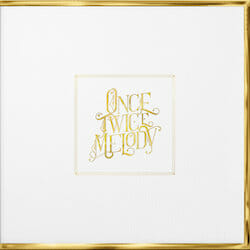 Since 2004, Beach House have been enchanting us. Few artists in the last 20 years have managed to intoxicate their listeners so consistently and skillfully. In a catalog now spanning nearly 100 songs, the duo have very few duds. Maybe that’s because a Beach House song only asks as much of you as you’d like to give. Listen to “Lazuli” passively while lazing in a sunlit room or melt into it free of distractions, but the song will sweep over you either way. Like fog rolling in on a lake, you can see it—touch it, even—but you can’t capture or evade it. And if you tried to describe it to an alien from another planet, you probably wouldn’t get very far. Released in four “chapters” over the course of a few months, Once Twice Melody again accomplishes this feeling of inevitability. The eighth album from the pair of dream-pop stalwarts (a term that is surely overused, but one that applies here, if anywhere) consisting of Victoria Legrand and Alex Scally won’t shock any longtime Beach House listeners. But it will certainly thrill them. From the majestic opening notes of the title track to the last electronic flourish of closer “Modern Love Stories,” Once Twice Melody is the culmination of everything Beach House do best. —Ellen Johnson
Since 2004, Beach House have been enchanting us. Few artists in the last 20 years have managed to intoxicate their listeners so consistently and skillfully. In a catalog now spanning nearly 100 songs, the duo have very few duds. Maybe that’s because a Beach House song only asks as much of you as you’d like to give. Listen to “Lazuli” passively while lazing in a sunlit room or melt into it free of distractions, but the song will sweep over you either way. Like fog rolling in on a lake, you can see it—touch it, even—but you can’t capture or evade it. And if you tried to describe it to an alien from another planet, you probably wouldn’t get very far. Released in four “chapters” over the course of a few months, Once Twice Melody again accomplishes this feeling of inevitability. The eighth album from the pair of dream-pop stalwarts (a term that is surely overused, but one that applies here, if anywhere) consisting of Victoria Legrand and Alex Scally won’t shock any longtime Beach House listeners. But it will certainly thrill them. From the majestic opening notes of the title track to the last electronic flourish of closer “Modern Love Stories,” Once Twice Melody is the culmination of everything Beach House do best. —Ellen Johnson
44. yeule: Glitch Princess Singapore-born Nat Cmiel, aka yeule, has never been one to shy away from that which unsettles, whether it’s the intensely personal subject matter of their songs or the unconventional sonic textures they weave, turning noise-pop inside out. Their third full-length project Glitch Princess turns the intensity up to a 10, swallowing up everything in its path with shiny synths and noise-pitched vocals that collapse into harsh, glitchy musical passages. “You tell me not to be so hard on my own beauty / You still hold me even though / I’m made of fire burning through you,” they sing on the beautiful, relatively straightforward “Don’t Be So Hard on Your Own Beauty,” giving a hint that the album isn’t for the faint of heart, especially not by the time you reach its nearly-five-hour-long (!!!) closing track, the ambient “The Things They Did for Me Out of Love.” If anything, Cmiel is committed to laying out everything they feel with this latest project—and an impressive amount of those big, ambitious swings they take for it pay off. —Elise Soutar
Singapore-born Nat Cmiel, aka yeule, has never been one to shy away from that which unsettles, whether it’s the intensely personal subject matter of their songs or the unconventional sonic textures they weave, turning noise-pop inside out. Their third full-length project Glitch Princess turns the intensity up to a 10, swallowing up everything in its path with shiny synths and noise-pitched vocals that collapse into harsh, glitchy musical passages. “You tell me not to be so hard on my own beauty / You still hold me even though / I’m made of fire burning through you,” they sing on the beautiful, relatively straightforward “Don’t Be So Hard on Your Own Beauty,” giving a hint that the album isn’t for the faint of heart, especially not by the time you reach its nearly-five-hour-long (!!!) closing track, the ambient “The Things They Did for Me Out of Love.” If anything, Cmiel is committed to laying out everything they feel with this latest project—and an impressive amount of those big, ambitious swings they take for it pay off. —Elise Soutar
43. FKA twigs: CAPRISONGS “I made you a mixtape because when I feel you, I feel me,” FKA twigs casually remarks on “ride the dragon,” the opening track on her debut mixtape CAPRISONGS. The singer’s first foray into the classic format is off-putting at first, since she is one of music’s most progressive pop personalities. Twigs’ most recent album, 2019’s MAGDALENE, was quite the dramatic statement, with religious allusions wrapped tightly in ethereal and operatic vocals, then placed against stirring instrumentation. It felt like at any moment, her voice could shatter like glass and the song would be all the better for it. On CAPRISONGS, the turmoil she carries is palpable, but her disposition is different. There are theatrics, but twigs replaces overwhelming intensity with playfulness and self-awareness. It’s the most confident she’s ever been. —Candace McDuffie
“I made you a mixtape because when I feel you, I feel me,” FKA twigs casually remarks on “ride the dragon,” the opening track on her debut mixtape CAPRISONGS. The singer’s first foray into the classic format is off-putting at first, since she is one of music’s most progressive pop personalities. Twigs’ most recent album, 2019’s MAGDALENE, was quite the dramatic statement, with religious allusions wrapped tightly in ethereal and operatic vocals, then placed against stirring instrumentation. It felt like at any moment, her voice could shatter like glass and the song would be all the better for it. On CAPRISONGS, the turmoil she carries is palpable, but her disposition is different. There are theatrics, but twigs replaces overwhelming intensity with playfulness and self-awareness. It’s the most confident she’s ever been. —Candace McDuffie
42. Florist: Florist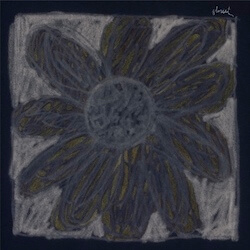 Florist is a special record that stands apart from Emily Alone. The former is denser, clocking in at a mountainous 19 tracks, and finds Emily Sprague picking up the pieces that inspired the latter. It’s a (mostly) joyful portrait of friendship, family and affection, told from both first- and second-person points of view. It’s not the first folk record to flirt with almost two-dozen songs this year, as 2022 has already seen the release of Big Thief’s heavy, sprawling and critically revered Dragon New Warm Mountain I Believe in You. But Florist’s contribution is much different and, in some ways, better. Florist’s arrival finds the band tinkering with new horns, blooming synths, roving percussion and sampling. The atmospheric landscapes behind Sprague’s guitar on previous albums are now filled up. —Matt Mitchell
Florist is a special record that stands apart from Emily Alone. The former is denser, clocking in at a mountainous 19 tracks, and finds Emily Sprague picking up the pieces that inspired the latter. It’s a (mostly) joyful portrait of friendship, family and affection, told from both first- and second-person points of view. It’s not the first folk record to flirt with almost two-dozen songs this year, as 2022 has already seen the release of Big Thief’s heavy, sprawling and critically revered Dragon New Warm Mountain I Believe in You. But Florist’s contribution is much different and, in some ways, better. Florist’s arrival finds the band tinkering with new horns, blooming synths, roving percussion and sampling. The atmospheric landscapes behind Sprague’s guitar on previous albums are now filled up. —Matt Mitchell
41. Florence The Machine: Dance Fever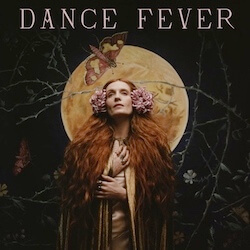 The music of Florence The Machine is consistently singular. The band, led by Florence Welch, have been performing bewitching baroque pop since the late aughts. While their music has become higher in fidelity as their star has risen, they’ve never abandoned their sweeping gothic ambitions. Though they have their occasional moments of stirring quiet, they’re a group best suited to huge, uproarious songs. Welch is a charismatic performer, often possessed by the power of her own music, and is prone to leaping and bounding around the stage, sometimes running through a theater’s aisles. While writing the songs that would, years later, become Dance Fever, the band’s fifth album, Welch read about choreomania, the Middle Ages concept of being so lost in euphoria that one dances themself to death—an idea that would naturally fascinate someone so morbidly devoted to performance. These songs would have to reflect this compulsion in their sound and structure, building them to feel at home onstage. After enlisting pop hitmaker Jack Antonoff, the pandemic began just a week into recording sessions, forcing Welch back to both London and square one. While unable to meet in person, she worked remotely with Antonoff and Glass Animals’ Dave Bayley. The resulting songs are some of the most captivating Florence + The Machine have made in years, and exist as a hellish rebuke against stillness. —Eric Bennett
The music of Florence The Machine is consistently singular. The band, led by Florence Welch, have been performing bewitching baroque pop since the late aughts. While their music has become higher in fidelity as their star has risen, they’ve never abandoned their sweeping gothic ambitions. Though they have their occasional moments of stirring quiet, they’re a group best suited to huge, uproarious songs. Welch is a charismatic performer, often possessed by the power of her own music, and is prone to leaping and bounding around the stage, sometimes running through a theater’s aisles. While writing the songs that would, years later, become Dance Fever, the band’s fifth album, Welch read about choreomania, the Middle Ages concept of being so lost in euphoria that one dances themself to death—an idea that would naturally fascinate someone so morbidly devoted to performance. These songs would have to reflect this compulsion in their sound and structure, building them to feel at home onstage. After enlisting pop hitmaker Jack Antonoff, the pandemic began just a week into recording sessions, forcing Welch back to both London and square one. While unable to meet in person, she worked remotely with Antonoff and Glass Animals’ Dave Bayley. The resulting songs are some of the most captivating Florence + The Machine have made in years, and exist as a hellish rebuke against stillness. —Eric Bennett
40. Taylor Swift: Midnights Taylor Swift is never not thinking about the big picture, and she returns to the business of image-making on her cryptic and catchy 10th album, Midnights. Where Reputation was an entire record devoted to image and even revenge on those who had defaced her, Swift speaks a more subtle language on Midnights. While it was pitched as something of a concept album—“the stories of 13 sleepless nights scattered throughout my life”—it probably could have been framed like any of her other releases. But Swift knows her all-too-attentive fans (and haters) will assign the album an aesthetic anyways, so why not control the narrative herself? So she shaped these 13 (!) songs into an on-brand all-nighter. It’s not news that Swift is particularly fascinated with the bewitching hour. The 2 a.m. timestamp comes up in her music all the time, and as Midnights is perhaps her most self-aware work to date (with some of her best writing to boot), it makes sense that she is just leaning into the whole idea that daytime outcomes hinge on nighttime circumstance. While folklore partner Aaron Dessner is notably absent from Midnights, Swift again joins forces with Jack Antonoff and the pair play to this theme whenever possible, all while expounding on the synth-pop groundwork laid by 1989 in 2014, and further teased out on Lover and Reputation. —Ellen Johnson
Taylor Swift is never not thinking about the big picture, and she returns to the business of image-making on her cryptic and catchy 10th album, Midnights. Where Reputation was an entire record devoted to image and even revenge on those who had defaced her, Swift speaks a more subtle language on Midnights. While it was pitched as something of a concept album—“the stories of 13 sleepless nights scattered throughout my life”—it probably could have been framed like any of her other releases. But Swift knows her all-too-attentive fans (and haters) will assign the album an aesthetic anyways, so why not control the narrative herself? So she shaped these 13 (!) songs into an on-brand all-nighter. It’s not news that Swift is particularly fascinated with the bewitching hour. The 2 a.m. timestamp comes up in her music all the time, and as Midnights is perhaps her most self-aware work to date (with some of her best writing to boot), it makes sense that she is just leaning into the whole idea that daytime outcomes hinge on nighttime circumstance. While folklore partner Aaron Dessner is notably absent from Midnights, Swift again joins forces with Jack Antonoff and the pair play to this theme whenever possible, all while expounding on the synth-pop groundwork laid by 1989 in 2014, and further teased out on Lover and Reputation. —Ellen Johnson
39. Hurray for the Riff Raff: Life on Earth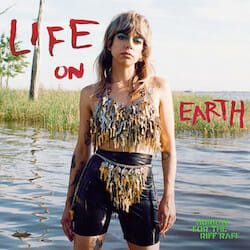 Life on Earth, the seventh album by New Orleans-via-New York folk-blues-punk project Hurray for the Riff Raff, is reinvention with a caveat: Singer/songwriter and frontperson Alynda Segarra has taken such leaps over the last decade and a half as a human being, as well as a musician, that their efforts on Life on Earth express reinvention less than they do rebirth. It’s rare for a record so deep in a band’s discography to function as a fresh start after establishing a style, not to mention a personality, over so many years. With Segarra’s newfound sense of self and a new outlook on life and the world comes a new sound, and a new mission, both related to the old but attuned to the moment. Think of Life on Earth as a guide for staying alive and going to ground even when it seems like there’s no ground to go to: From the very first song, “Wolves,” Segarra appears to be giving their listeners tools for evading danger and death. —Andy Crump
Life on Earth, the seventh album by New Orleans-via-New York folk-blues-punk project Hurray for the Riff Raff, is reinvention with a caveat: Singer/songwriter and frontperson Alynda Segarra has taken such leaps over the last decade and a half as a human being, as well as a musician, that their efforts on Life on Earth express reinvention less than they do rebirth. It’s rare for a record so deep in a band’s discography to function as a fresh start after establishing a style, not to mention a personality, over so many years. With Segarra’s newfound sense of self and a new outlook on life and the world comes a new sound, and a new mission, both related to the old but attuned to the moment. Think of Life on Earth as a guide for staying alive and going to ground even when it seems like there’s no ground to go to: From the very first song, “Wolves,” Segarra appears to be giving their listeners tools for evading danger and death. —Andy Crump
38. Madison Cunningham: Revealer There’s something in Madison Cunningham’s music for everyone: folk roots, but with jazzy accents and sharp enough guitar and drum lines to allow you to move with it. There’s so much glittering on the surface of Revealer, and then so much that swims underneath. Although the first few tracks sparkle, the album takes you by surprise with curveballs like “Life According to Raechel,” a true heartbreaker in the center of the album that leaves your skin crawling with sorrow, and “Who Are You Now,” relentlessly asking the listener, “Who are you now / Who are you this time?” Her songs feel like perfectly and eccentrically built cupboards, housing everything just so inside different nooks, making well-organized space for the shape of every word and synth swell. From the melodies and arrangements to the lyrics, it is clear that this LP is in the most vulnerable space, one of self-consciousness coupled with a lot of emotion in every possible direction. Cunningham never has to scream to make herself heard. Instead, she often remains low to the ground with her volume, making it all the more powerful when her voice soars into pure upper registers or the cymbals accent her point. On album closer, “Sara And The Silent Crowd,” she aims for her own heart and yours, leaving you with: “And when the glamor dies down, there’s only you now / Only you and yourself to appease the silent crowd / And no one can shelter you now.” —Rosa Sofia Kaminski
There’s something in Madison Cunningham’s music for everyone: folk roots, but with jazzy accents and sharp enough guitar and drum lines to allow you to move with it. There’s so much glittering on the surface of Revealer, and then so much that swims underneath. Although the first few tracks sparkle, the album takes you by surprise with curveballs like “Life According to Raechel,” a true heartbreaker in the center of the album that leaves your skin crawling with sorrow, and “Who Are You Now,” relentlessly asking the listener, “Who are you now / Who are you this time?” Her songs feel like perfectly and eccentrically built cupboards, housing everything just so inside different nooks, making well-organized space for the shape of every word and synth swell. From the melodies and arrangements to the lyrics, it is clear that this LP is in the most vulnerable space, one of self-consciousness coupled with a lot of emotion in every possible direction. Cunningham never has to scream to make herself heard. Instead, she often remains low to the ground with her volume, making it all the more powerful when her voice soars into pure upper registers or the cymbals accent her point. On album closer, “Sara And The Silent Crowd,” she aims for her own heart and yours, leaving you with: “And when the glamor dies down, there’s only you now / Only you and yourself to appease the silent crowd / And no one can shelter you now.” —Rosa Sofia Kaminski
37. Dry Cleaning: Stumpwork “I don’t want to go on about it / But we’re back in business / Just a sweet, natural start / We will flower,” Florence Shaw declares on “Anna Calls from the Arctic,” the first song on Dry Cleaning’s sophomore album Stumpwork. She’s true to her word: The LP’s tone-setting opener heralds a subtler, stranger new era for the U.K. quartet, emboldened by the universal acclaim for their full-length debut New Long Leg. The band’s jangling guitar-rock grooves persist, but as the exception, rather than the rule—they are increasingly keen on marching down unexpected sonic avenues, complicating the instrumentation that underpins Shaw’s sometimes-spoken, sometimes-sung vocal mosaics. Stumpwork has enough in common with its predecessor so as not to throw fans for a loop, but is very much its own moody, nuanced animal, an expressive and expectation-defying showcase of Dry Cleaning’s blossoming sound. —Scott Russell
“I don’t want to go on about it / But we’re back in business / Just a sweet, natural start / We will flower,” Florence Shaw declares on “Anna Calls from the Arctic,” the first song on Dry Cleaning’s sophomore album Stumpwork. She’s true to her word: The LP’s tone-setting opener heralds a subtler, stranger new era for the U.K. quartet, emboldened by the universal acclaim for their full-length debut New Long Leg. The band’s jangling guitar-rock grooves persist, but as the exception, rather than the rule—they are increasingly keen on marching down unexpected sonic avenues, complicating the instrumentation that underpins Shaw’s sometimes-spoken, sometimes-sung vocal mosaics. Stumpwork has enough in common with its predecessor so as not to throw fans for a loop, but is very much its own moody, nuanced animal, an expressive and expectation-defying showcase of Dry Cleaning’s blossoming sound. —Scott Russell
36. Nilüfer Yanya: PAINLESS Nilüfer Yanya’s sophomore effort PAINLESS finds the London singer/songwriter sharpening her sound to a piercing point. In place of the melodic art-rock, bluesy swagger and jazzy sophisti-pop that bloomed across her debut Miss Universe is a more tightly focused and carefully controlled sonic sensibility, defined by precise guitar work, punchy dance-pop beats, hooky vocals and atmospheric production. Yanya’s lyricism is also refreshed, leaving Miss Universe’s high-concept approach behind in favor of more direct, revelatory expression. It’s an exciting step forward from a young artist who has yet to take any other kind. —Scott Russell
Nilüfer Yanya’s sophomore effort PAINLESS finds the London singer/songwriter sharpening her sound to a piercing point. In place of the melodic art-rock, bluesy swagger and jazzy sophisti-pop that bloomed across her debut Miss Universe is a more tightly focused and carefully controlled sonic sensibility, defined by precise guitar work, punchy dance-pop beats, hooky vocals and atmospheric production. Yanya’s lyricism is also refreshed, leaving Miss Universe’s high-concept approach behind in favor of more direct, revelatory expression. It’s an exciting step forward from a young artist who has yet to take any other kind. —Scott Russell
35. The Weeknd: Dawn FM After Hours set expectations for The Weeknd. How was Abel Tesfaye going to follow up what was, arguably, one of the best side-twos on a pop record in recent memory? When it dropped, the world had only recently gone to shit, and I approached the songs looking for something revolutionary in its lyricism. But now, there’s something displeasurable about mining for immediate profundity in a world where nothing can quite contextualize the hell we’re living in. And as we are about to hit the second anniversary of the pandemic, I realize that I, and so many others, just ache to experience joy, to share community through goodness and remember what it felt like to dance into writhing bodies as weightless as they were distant. Dawn FM’s story works by avoiding risk and never getting tangled up in itself, taking over as Tesfaye’s best lyrical performance yet. But instrumentally and technically, it’s a near-perfect record; the sexiest hour of songs in years, released during a moment where artists are doing their best to track albums with urgent commentary. Dawn FM’s urgency doesn’t come by way of Tesfaye fashioning a song that teleports us to a specific moment in the pandemic, but rather in how he momentarily transports us out of it. —Matt Mitchell
After Hours set expectations for The Weeknd. How was Abel Tesfaye going to follow up what was, arguably, one of the best side-twos on a pop record in recent memory? When it dropped, the world had only recently gone to shit, and I approached the songs looking for something revolutionary in its lyricism. But now, there’s something displeasurable about mining for immediate profundity in a world where nothing can quite contextualize the hell we’re living in. And as we are about to hit the second anniversary of the pandemic, I realize that I, and so many others, just ache to experience joy, to share community through goodness and remember what it felt like to dance into writhing bodies as weightless as they were distant. Dawn FM’s story works by avoiding risk and never getting tangled up in itself, taking over as Tesfaye’s best lyrical performance yet. But instrumentally and technically, it’s a near-perfect record; the sexiest hour of songs in years, released during a moment where artists are doing their best to track albums with urgent commentary. Dawn FM’s urgency doesn’t come by way of Tesfaye fashioning a song that teleports us to a specific moment in the pandemic, but rather in how he momentarily transports us out of it. —Matt Mitchell
34. Destroyer: LABYRINTHITIS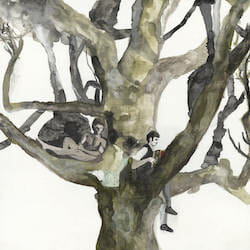 “I don’t know / Where I’m going,” Dan Bejar sings on second LABYRINTHITIS single “Eat the Wine, Drink the Bread,” observing, “It’s insane in here, it’s a lunacy out there.” Destroyer’s 13th studio album is, indeed, a document of topsy-turvy times, written mostly in 2020 and recorded the following spring, with Bejar and John Collins working virtually from Vancouver and the remote Galiano Island, respectively. But then again, when has a Destroyer record operated according to any logic but its own? On LABYRINTHITIS, the band take disco, Art of Noise and New Order as their muses, disappearing further down the dance-pop rabbit hole they skirted on 2017’s ken and dove headfirst into on 2020’s Have We Met. Bejar and company are still indulging their quirks and seeking new horizons in their fourth decade as a band, and the result on LABYRINTHITIS is well-worth getting lost in. —Scott Russell
“I don’t know / Where I’m going,” Dan Bejar sings on second LABYRINTHITIS single “Eat the Wine, Drink the Bread,” observing, “It’s insane in here, it’s a lunacy out there.” Destroyer’s 13th studio album is, indeed, a document of topsy-turvy times, written mostly in 2020 and recorded the following spring, with Bejar and John Collins working virtually from Vancouver and the remote Galiano Island, respectively. But then again, when has a Destroyer record operated according to any logic but its own? On LABYRINTHITIS, the band take disco, Art of Noise and New Order as their muses, disappearing further down the dance-pop rabbit hole they skirted on 2017’s ken and dove headfirst into on 2020’s Have We Met. Bejar and company are still indulging their quirks and seeking new horizons in their fourth decade as a band, and the result on LABYRINTHITIS is well-worth getting lost in. —Scott Russell
33. Jockstrap: I Love You Jennifer B The debut album from London duo Jockstrap—Georgia Ellery, also of Black Country, New Road, and Taylor Skye—takes all of one minute to announce itself as something remarkable. Opener “Neon” draws you in with sparse acoustic guitar and Ellery’s lithe vocal, only to wallop you with rib cage-rattling bass, a film score-esque theremin sample and a ghostly chorus. It’s the first “holy shit” moment of many on the record, “a collection of Jockstrap tracks that have been three years in the making,” per the duo. Dramatic strings, synths and chanting usher “Concrete Over Water” into EDM banger mode; harp plucks flicker between organic and artificial to introduce “Angst”; closer “50/50” feels like a club anthem for the end of the world. Euphoric and disorienting at once, their deconstructed dance-pop music brings cubist art to mind, assembling familiar shapes into structures that are altogether alien. As Jockstrap leave the launchpad, you can either crane your neck at their dizzying ascent, or hold on for dear life and enjoy the ride, wherever it may take you. —Scott Russell
The debut album from London duo Jockstrap—Georgia Ellery, also of Black Country, New Road, and Taylor Skye—takes all of one minute to announce itself as something remarkable. Opener “Neon” draws you in with sparse acoustic guitar and Ellery’s lithe vocal, only to wallop you with rib cage-rattling bass, a film score-esque theremin sample and a ghostly chorus. It’s the first “holy shit” moment of many on the record, “a collection of Jockstrap tracks that have been three years in the making,” per the duo. Dramatic strings, synths and chanting usher “Concrete Over Water” into EDM banger mode; harp plucks flicker between organic and artificial to introduce “Angst”; closer “50/50” feels like a club anthem for the end of the world. Euphoric and disorienting at once, their deconstructed dance-pop music brings cubist art to mind, assembling familiar shapes into structures that are altogether alien. As Jockstrap leave the launchpad, you can either crane your neck at their dizzying ascent, or hold on for dear life and enjoy the ride, wherever it may take you. —Scott Russell
32. Kendrick Lamar: Mr. Morale & The Big Steppers Throughout Mr. Morale & The Big Steppers, Kendrick Lamar unpacks his sins. His longtime partner Whitney Alford urges him to seek counseling after his various infidelities are revealed. Kendrick, now the father of two children, is told to turn to Oprah-approved German philosopher Eckhart Tolle to get to the root of what would cause his supposed sex addiction. The production on the album mirrors Kendrick’s distress. Gone are the pleasant jazz compositions of To Pimp a Butterfly and the cleaner rhythms of DAMN.—in their place are scattered piano lines, manic drums, distorted vocal samples and panic attack-inducing synths, all designed to give the listener feelings of anxiety and discomfort. The album plays out like an open therapy session, filled with the raw and unfiltered thoughts of one of the greatest rappers to ever pick up the mic. These thoughts are vulnerable, unmanicured and, to the shock of some fans, politically incorrect and ignorant. Mr. Morale & The Big Steppers rejects conformity and leaves its flaws in on purpose, featuring some of Kendrick’s best and worst songs of his career. —Josh Svetz
Throughout Mr. Morale & The Big Steppers, Kendrick Lamar unpacks his sins. His longtime partner Whitney Alford urges him to seek counseling after his various infidelities are revealed. Kendrick, now the father of two children, is told to turn to Oprah-approved German philosopher Eckhart Tolle to get to the root of what would cause his supposed sex addiction. The production on the album mirrors Kendrick’s distress. Gone are the pleasant jazz compositions of To Pimp a Butterfly and the cleaner rhythms of DAMN.—in their place are scattered piano lines, manic drums, distorted vocal samples and panic attack-inducing synths, all designed to give the listener feelings of anxiety and discomfort. The album plays out like an open therapy session, filled with the raw and unfiltered thoughts of one of the greatest rappers to ever pick up the mic. These thoughts are vulnerable, unmanicured and, to the shock of some fans, politically incorrect and ignorant. Mr. Morale & The Big Steppers rejects conformity and leaves its flaws in on purpose, featuring some of Kendrick’s best and worst songs of his career. —Josh Svetz
31. Animal Collective: Time Skiffs In the years after their 2016 album Painting With, Animal Collective’s ambitions started to gear towards scoring visual projects and creating location-based music, until a global pandemic reshaped the way they—and all working musicians—were able to function. Though no strangers to working on music remotely (the original demos for Merriweather Post Pavilion were composed over email), the band were met with the challenge of living up to their legacy while facing an uncertain future for the music industry. The result is Time Skiffs, in which Animal Collective find a way to make peace with the swarms of present-day adulthood anxieties while paying tribute to their past. A far cry from the rushed, electronic dirges of their previous album, Time Skiffs finds the band taking their time and doing what they do best: allowing space, texture and infectious melody to whisk the listener away to various sensory destinations, all with the wisdom and confidence of a group who have weathered life’s storms, and recognize the opportunity for joy and growth that resides within them. —Jason Friedman
In the years after their 2016 album Painting With, Animal Collective’s ambitions started to gear towards scoring visual projects and creating location-based music, until a global pandemic reshaped the way they—and all working musicians—were able to function. Though no strangers to working on music remotely (the original demos for Merriweather Post Pavilion were composed over email), the band were met with the challenge of living up to their legacy while facing an uncertain future for the music industry. The result is Time Skiffs, in which Animal Collective find a way to make peace with the swarms of present-day adulthood anxieties while paying tribute to their past. A far cry from the rushed, electronic dirges of their previous album, Time Skiffs finds the band taking their time and doing what they do best: allowing space, texture and infectious melody to whisk the listener away to various sensory destinations, all with the wisdom and confidence of a group who have weathered life’s storms, and recognize the opportunity for joy and growth that resides within them. —Jason Friedman
30. Chat Pile: God’s Country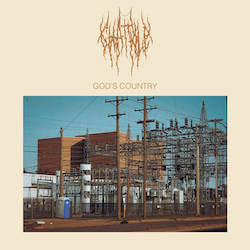 Chat Pile’s debut LP ends with a nine-minute narrative that sounds outlandish on paper: A man is tormented by a nightmare figure resembling McDonald’s mascot Grimace, to the point of suicide. The surreally macabre premise is heightened all the more by the track’s name: “Grimace_Smoking_Weed.jpeg,” a title calling to mind a tossed-off joke file name or online message to a friend in lieu of an actual image. But the song itself is arguably the most chilling selection on an already-bleak record, in no small part due to vocalist Raygun Busch’s tortured contributions that sound an inch from self-destructive action at a moment’s notice—even before erupting into agonized shrieks in protest of the “purple man” who haunts him. When the track’s back half stretches into a sludgy death march, his lyrics become all the more direct, culminating in Busch crying out, “I don’t wanna be alive anymore / Do you?” The pressure of the track proves to be so suffocating that even Busch’s final scream of Grimace’s name to close the album becomes bloodcurdling, where a more ironic approach would have rendered the whole thing high camp. “Grimace_Smoking_Weed.jpeg” is, in microcosm, emblematic of the tricky balance Chat Pile evokes with visceral ugliness throughout God’s Country. The absurdity and paradox of capitalist landscapes are laid bare, depicted with just as much horror as the band believes they ought to merit. Just as characters for fast-food marketing and toys become taunting reminders of the soul-crushing nature of post-industrialization, so, too, does the illogical nature of houselessness in a nation with buildings to spare, and the pursuit of wealth above personal fulfillment. —Natalie Marlin
Chat Pile’s debut LP ends with a nine-minute narrative that sounds outlandish on paper: A man is tormented by a nightmare figure resembling McDonald’s mascot Grimace, to the point of suicide. The surreally macabre premise is heightened all the more by the track’s name: “Grimace_Smoking_Weed.jpeg,” a title calling to mind a tossed-off joke file name or online message to a friend in lieu of an actual image. But the song itself is arguably the most chilling selection on an already-bleak record, in no small part due to vocalist Raygun Busch’s tortured contributions that sound an inch from self-destructive action at a moment’s notice—even before erupting into agonized shrieks in protest of the “purple man” who haunts him. When the track’s back half stretches into a sludgy death march, his lyrics become all the more direct, culminating in Busch crying out, “I don’t wanna be alive anymore / Do you?” The pressure of the track proves to be so suffocating that even Busch’s final scream of Grimace’s name to close the album becomes bloodcurdling, where a more ironic approach would have rendered the whole thing high camp. “Grimace_Smoking_Weed.jpeg” is, in microcosm, emblematic of the tricky balance Chat Pile evokes with visceral ugliness throughout God’s Country. The absurdity and paradox of capitalist landscapes are laid bare, depicted with just as much horror as the band believes they ought to merit. Just as characters for fast-food marketing and toys become taunting reminders of the soul-crushing nature of post-industrialization, so, too, does the illogical nature of houselessness in a nation with buildings to spare, and the pursuit of wealth above personal fulfillment. —Natalie Marlin
29. The Smile: A Light For Attracting Attention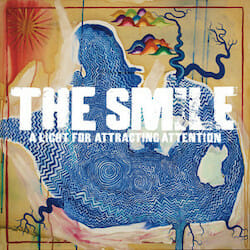 During the first year of the pandemic, as Radiohead seemingly shifted from active band to archival project, Thom Yorke and Jonny Greenwood did something they haven’t done since their teenage years: They formed a new band together. They called it The Smile—a reference to a Ted Hughes poem, not their sunny dispositions, in case there was any confusion—and they invited Tom Skinner, drummer for the British jazz group Sons of Kemet, to fill the intimidating position of the sole non-Radiohead member of the trio. Nearly half the time, A Light for Attracting Attention buzzes and crackles with a sense of reckless abandon absent from the last 15 years’ worth of Radiohead releases. “You Will Never Work in Television Again” has the high-octane guitars and mile-a-minute Yorke delivery to boost a dead person’s heart rate. It’s a revelation. “Thin Thing” is menacing and wonky, with a burbling guitar riff that seems maximized to confuse those YouTube guitar tutorial guys. These songs are insular and anxiety-ridden, shorn of soaring choruses or straightforward rhythms, but they are also invigorating jolts of art-rock energy. Like much of this album, the emphasis is on proggy interplay over studio trickery. But this is hardly a barebones garage-rock diversion. The Smile contain multitudes. No Radiohead side project has ever sounded quite as much like Radiohead as this band does, invoking many eras of the band’s career at once. I assume I Can’t Believe It’s Not Radiohead! was a rejected album title. —Zach Schonfeld
During the first year of the pandemic, as Radiohead seemingly shifted from active band to archival project, Thom Yorke and Jonny Greenwood did something they haven’t done since their teenage years: They formed a new band together. They called it The Smile—a reference to a Ted Hughes poem, not their sunny dispositions, in case there was any confusion—and they invited Tom Skinner, drummer for the British jazz group Sons of Kemet, to fill the intimidating position of the sole non-Radiohead member of the trio. Nearly half the time, A Light for Attracting Attention buzzes and crackles with a sense of reckless abandon absent from the last 15 years’ worth of Radiohead releases. “You Will Never Work in Television Again” has the high-octane guitars and mile-a-minute Yorke delivery to boost a dead person’s heart rate. It’s a revelation. “Thin Thing” is menacing and wonky, with a burbling guitar riff that seems maximized to confuse those YouTube guitar tutorial guys. These songs are insular and anxiety-ridden, shorn of soaring choruses or straightforward rhythms, but they are also invigorating jolts of art-rock energy. Like much of this album, the emphasis is on proggy interplay over studio trickery. But this is hardly a barebones garage-rock diversion. The Smile contain multitudes. No Radiohead side project has ever sounded quite as much like Radiohead as this band does, invoking many eras of the band’s career at once. I assume I Can’t Believe It’s Not Radiohead! was a rejected album title. —Zach Schonfeld
28. Momma: Household Name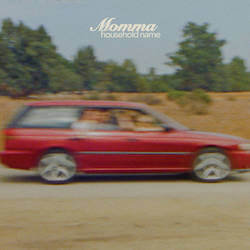 Like the American answer to Wet Leg, here come Momma to make themselves a Household Name. The Brooklyn-based band, led by founding vocalist/guitarist duo Etta Friedman and Allegra Weingarten, have already shared stages with those buzzy British peers, and their hook-laden indie-rock sounds are equally irresistible. In a way, Household Name invites this kind of comparison: Produced by Momma multi-instrumentalist Aron Kobayashi Ritch and mastered by Grammy-winning engineer Emily Lazar (The Killers, Maggie Rogers), the album is structured to reflect “the rise and fall of the rock star,” as the band step into the arena and assert their burgeoning position as part of the genre’s history. They emulate The Breeders and Nirvana, shout out Pavement on the exhilarating “Speeding 72,” and nod to Liz Phair love song “Nashville” on “Lucky,” revealing themselves as adept-beyond-their-years students of rock ‘n’ roll, a la Horsegirl. Get used to hearing Momma’s Household Name. —Scott Russell
Like the American answer to Wet Leg, here come Momma to make themselves a Household Name. The Brooklyn-based band, led by founding vocalist/guitarist duo Etta Friedman and Allegra Weingarten, have already shared stages with those buzzy British peers, and their hook-laden indie-rock sounds are equally irresistible. In a way, Household Name invites this kind of comparison: Produced by Momma multi-instrumentalist Aron Kobayashi Ritch and mastered by Grammy-winning engineer Emily Lazar (The Killers, Maggie Rogers), the album is structured to reflect “the rise and fall of the rock star,” as the band step into the arena and assert their burgeoning position as part of the genre’s history. They emulate The Breeders and Nirvana, shout out Pavement on the exhilarating “Speeding 72,” and nod to Liz Phair love song “Nashville” on “Lucky,” revealing themselves as adept-beyond-their-years students of rock ‘n’ roll, a la Horsegirl. Get used to hearing Momma’s Household Name. —Scott Russell
27. Horsegirl: Versions of Modern Performance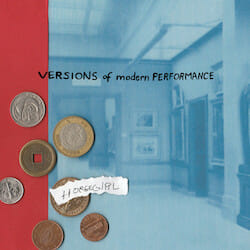 Horsegirl are three friends who make music in a basement. It’s true, and they want you to know that, not because they’re shy about the attention they’ve received as indie rock’s latest breakthrough, but because the Chicago trio of Penelope Lowenstein, Nora Cheng and Gigi Reece want you to know that they’re having fun. They’re accomplishing that in the way that only passionate teenagers can: professing their admiration for Kim Gordon, painting T-shirts haphazardly, and throwing riffs against the wall until they unfurl into songs. The end product of those basement hangs, Versions of Modern Performance, impressively combines noisy, punk-minded influences that congeal into a wondrous concoction of post-punk, no-wave, early shoegaze, and more. While inspired by the ’80s and ’90s cadres of emergent indie rock’s noisier actors, Horsegirl’s sound is singular, curious and glossed with a healthy layer of irony that Gen Z wears like a reliable pair of workboots. —Devon Chodzin
Horsegirl are three friends who make music in a basement. It’s true, and they want you to know that, not because they’re shy about the attention they’ve received as indie rock’s latest breakthrough, but because the Chicago trio of Penelope Lowenstein, Nora Cheng and Gigi Reece want you to know that they’re having fun. They’re accomplishing that in the way that only passionate teenagers can: professing their admiration for Kim Gordon, painting T-shirts haphazardly, and throwing riffs against the wall until they unfurl into songs. The end product of those basement hangs, Versions of Modern Performance, impressively combines noisy, punk-minded influences that congeal into a wondrous concoction of post-punk, no-wave, early shoegaze, and more. While inspired by the ’80s and ’90s cadres of emergent indie rock’s noisier actors, Horsegirl’s sound is singular, curious and glossed with a healthy layer of irony that Gen Z wears like a reliable pair of workboots. —Devon Chodzin
26. Rosalía: MOTOMAMI It was hard to imagine how much further Spanish pop star Rosalía could stretch her chameleonic ability to create experimental music that’s still accessible enough to transcend language. Then MOTOMAMI arrived, and we no longer had to imagine. By seamlessly exploring sexuality and spirituality through an eclectic mix of reggaeton, flamenco and even elements of hyperpop, Rosalía once again emerges as a nearly peerless artist who can slip into any genre and execute it with ease. Who else would think to interpolate a Soulja Boy sample into “DELIRIO DE GRANDEZA,” a cover of a 1968 song by Cuban salsa singer Justo Betancourt? Or work jazz-inspired percussion into “SAOKO,” a track that turns around and explodes into a pop banger the second it’s sure we’re not paying attention? Rosalía’s ability to weave references together while still putting her distinctive stamp on the finished product has cemented her place as a figure for whom fans will drop everything the second they find out she’s involved. As much an extended confession as it is a celebration, a project like MOTOMAMI makes it easy to see why they feel that way. —Elise Soutar
It was hard to imagine how much further Spanish pop star Rosalía could stretch her chameleonic ability to create experimental music that’s still accessible enough to transcend language. Then MOTOMAMI arrived, and we no longer had to imagine. By seamlessly exploring sexuality and spirituality through an eclectic mix of reggaeton, flamenco and even elements of hyperpop, Rosalía once again emerges as a nearly peerless artist who can slip into any genre and execute it with ease. Who else would think to interpolate a Soulja Boy sample into “DELIRIO DE GRANDEZA,” a cover of a 1968 song by Cuban salsa singer Justo Betancourt? Or work jazz-inspired percussion into “SAOKO,” a track that turns around and explodes into a pop banger the second it’s sure we’re not paying attention? Rosalía’s ability to weave references together while still putting her distinctive stamp on the finished product has cemented her place as a figure for whom fans will drop everything the second they find out she’s involved. As much an extended confession as it is a celebration, a project like MOTOMAMI makes it easy to see why they feel that way. —Elise Soutar
25. Tomberlin: i don’t know who needs to hear this…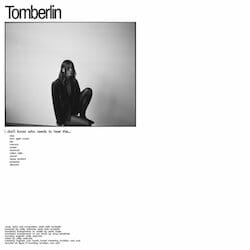 In recent years, there’s been an influx of musicians embracing minimalism. Often, the lack of excess can lead to these songs being dismissively tagged as “sad,” particularly if the artist dares to fill that space with any emotion at all. One of the finest practitioners of this sparse musicality is Sarah Beth Tomberlin, who performs under her surname. Her 2018 debut album At Weddings drew comparisons to ambient icons like Grouper and staples of contemporary indie like Julien Baker. Her music sits at the intersection of these artists’ in both sound and subject. At Weddings dealt with Tomberlin’s internal conflict, having left her home and religion behind. Raised in rural Illinois as a pastor’s kid, she uprooted to Louisville, where the bulk of At Weddings came to fruition. Since then, she’s moved to New York and released an EP called Projections in 2020. Projections, produced with Alex G, saw Tomberlin’s arrangements fill out—several of its tracks played with percussion, something rarely found on her debut. The natural next step was for her to follow in the footsteps of Baker, who began making hollow, devastating music before gradually fleshing out her band. And she did, sort of. Her new album, i don’t know who needs to hear this… is grander than anything she’s done before, but rarely does it feel like a departure. Recorded in Brooklyn with producer Philip Weinrobe, known for his work with Adrienne Lenker and Buck Meek, the record features contributions from Shahzad Islamly and Told Slant’s Felix Walworth. Where At Weddings was written without a goal in mind and carries that homespun air, the deliberateness of the songs on idkwntht is palpable. At the record’s heart is Tomberlin simultaneously embracing self-love and acceptance (“born again runner”), and taking love away from toxic influences (“collect caller”), no matter how difficult both acts may be. Results aren’t the point; it is simply the act of trying and holding space for one’s emotions that counts. —Eric Bennett
In recent years, there’s been an influx of musicians embracing minimalism. Often, the lack of excess can lead to these songs being dismissively tagged as “sad,” particularly if the artist dares to fill that space with any emotion at all. One of the finest practitioners of this sparse musicality is Sarah Beth Tomberlin, who performs under her surname. Her 2018 debut album At Weddings drew comparisons to ambient icons like Grouper and staples of contemporary indie like Julien Baker. Her music sits at the intersection of these artists’ in both sound and subject. At Weddings dealt with Tomberlin’s internal conflict, having left her home and religion behind. Raised in rural Illinois as a pastor’s kid, she uprooted to Louisville, where the bulk of At Weddings came to fruition. Since then, she’s moved to New York and released an EP called Projections in 2020. Projections, produced with Alex G, saw Tomberlin’s arrangements fill out—several of its tracks played with percussion, something rarely found on her debut. The natural next step was for her to follow in the footsteps of Baker, who began making hollow, devastating music before gradually fleshing out her band. And she did, sort of. Her new album, i don’t know who needs to hear this… is grander than anything she’s done before, but rarely does it feel like a departure. Recorded in Brooklyn with producer Philip Weinrobe, known for his work with Adrienne Lenker and Buck Meek, the record features contributions from Shahzad Islamly and Told Slant’s Felix Walworth. Where At Weddings was written without a goal in mind and carries that homespun air, the deliberateness of the songs on idkwntht is palpable. At the record’s heart is Tomberlin simultaneously embracing self-love and acceptance (“born again runner”), and taking love away from toxic influences (“collect caller”), no matter how difficult both acts may be. Results aren’t the point; it is simply the act of trying and holding space for one’s emotions that counts. —Eric Bennett
24. Weyes Blood: And in the Darkness, Hearts Aglow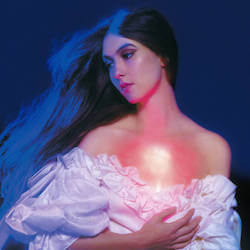 Natalie Mering’s (Weyes Blood) newest LP, And In The Darkness, Hearts Aglow, picks up right where Titanic Rising left us in 2019. Even the album covers bear similar imagery. On the latter’s, Mering is underwater in a bedroom, suspended in an oceanic ether above a wine-red carpet. Light pours in through the bellowing, jellyfish-translucent curtains. It’s as if she’s stranded and the shipwreck has not yet sunken down to the seabed. On the cover of Hearts Aglow, Mering appears to still be below the surface, her hair drifting through the water like a slow-motion wave, her chest, quite literally, bursting with a sun-red gleam. There’s a stillness afoot, a rubble above ready to be pieced back together. And Mering is standing atop the debris. —Matt Mitchell
Natalie Mering’s (Weyes Blood) newest LP, And In The Darkness, Hearts Aglow, picks up right where Titanic Rising left us in 2019. Even the album covers bear similar imagery. On the latter’s, Mering is underwater in a bedroom, suspended in an oceanic ether above a wine-red carpet. Light pours in through the bellowing, jellyfish-translucent curtains. It’s as if she’s stranded and the shipwreck has not yet sunken down to the seabed. On the cover of Hearts Aglow, Mering appears to still be below the surface, her hair drifting through the water like a slow-motion wave, her chest, quite literally, bursting with a sun-red gleam. There’s a stillness afoot, a rubble above ready to be pieced back together. And Mering is standing atop the debris. —Matt Mitchell
23. Perfume Genius: Ugly Season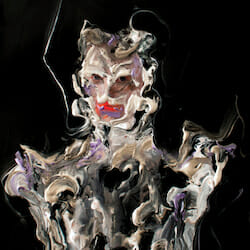 After two marquee-lighting records that could be viewed as the “arrival” moments for Perfume Genius, Mike Hadreas and his long-time collaborator and partner Alan Wyffels were ready to take the project back into the black-box theater to stretch the limits of the form on their new record, Ugly Season. The last Perfume Genius record, Set My Heart on Fire Immediately, was indie rock’s cinematic event of 2020. In the two years since, the plan had been to retreat away from the romantic grandeur of that album with a collaboration between Hadreas and well-known choreographer Kate Wallich. Commissioned by the Seattle Theatre Group and Mass MoCA, the dance performance titled The Sun Still Burns Here would star Hadreas—along with Wallich’s company of dancers, The YC—and contain 10 songs that he, Wyffels and Mills had written to accompany it. Those songs live on in two different mediums: a short film by acclaimed animator Jacolby Sattlewhite and as this standalone album. The music that Perfume Genius has created along with Mills on Ugly Season is as methodically paced and layered as you would hope for with a project of this scope. The ebbs and flows of a classical piece or the symphonic accompaniment to a ballet have always remained a template for pop music at its most sweeping and amorous. With Ugly Season, Hadreas and co. slowly draw you in with a sense of sonic mastery that rewards patience and undivided attention. —Pat King
After two marquee-lighting records that could be viewed as the “arrival” moments for Perfume Genius, Mike Hadreas and his long-time collaborator and partner Alan Wyffels were ready to take the project back into the black-box theater to stretch the limits of the form on their new record, Ugly Season. The last Perfume Genius record, Set My Heart on Fire Immediately, was indie rock’s cinematic event of 2020. In the two years since, the plan had been to retreat away from the romantic grandeur of that album with a collaboration between Hadreas and well-known choreographer Kate Wallich. Commissioned by the Seattle Theatre Group and Mass MoCA, the dance performance titled The Sun Still Burns Here would star Hadreas—along with Wallich’s company of dancers, The YC—and contain 10 songs that he, Wyffels and Mills had written to accompany it. Those songs live on in two different mediums: a short film by acclaimed animator Jacolby Sattlewhite and as this standalone album. The music that Perfume Genius has created along with Mills on Ugly Season is as methodically paced and layered as you would hope for with a project of this scope. The ebbs and flows of a classical piece or the symphonic accompaniment to a ballet have always remained a template for pop music at its most sweeping and amorous. With Ugly Season, Hadreas and co. slowly draw you in with a sense of sonic mastery that rewards patience and undivided attention. —Pat King
22. Aldous Harding: Warm Chris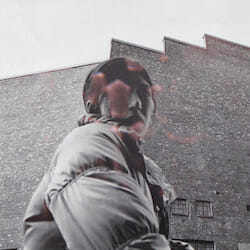 On “Tick Tock,” an early track on her new album Warm Chris, Aldous Harding addresses the absurdity of interpretation. “Wanted to see me, now that you see me, whatcha gonna do?” she taunts in the refrain, defying her witnesses to comprehend her. Her voice-play finds her evoking both Cat Power and Annie Lennox, sliding from the husky lament “Oh, the dirty of it” to a reedy cry of “Party people!” The new album continues Harding’s creative partnership with producer John Parish and evolves her sonic treatment of this Dadaist bent. The sparse instrumental backings of Party and Designer are elevated with a palette that draws from freak folk and baroque piano pop—it’s easy to sift out the influences of Sufjan Stevens and Kate Bush. Warm Chris thrives in that new flexibility, using Harding’s expanded sound to consider the implications of professional and interpersonal performance in turns across its 10 tracks. —Annie Parnell
On “Tick Tock,” an early track on her new album Warm Chris, Aldous Harding addresses the absurdity of interpretation. “Wanted to see me, now that you see me, whatcha gonna do?” she taunts in the refrain, defying her witnesses to comprehend her. Her voice-play finds her evoking both Cat Power and Annie Lennox, sliding from the husky lament “Oh, the dirty of it” to a reedy cry of “Party people!” The new album continues Harding’s creative partnership with producer John Parish and evolves her sonic treatment of this Dadaist bent. The sparse instrumental backings of Party and Designer are elevated with a palette that draws from freak folk and baroque piano pop—it’s easy to sift out the influences of Sufjan Stevens and Kate Bush. Warm Chris thrives in that new flexibility, using Harding’s expanded sound to consider the implications of professional and interpersonal performance in turns across its 10 tracks. —Annie Parnell
21. Pusha T: It’s Almost Dry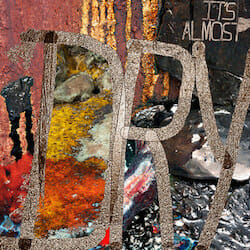 Pusha T has become synonymous with “coke rap,” a genre that is often imitated, but rarely perfected. It’s Almost Dry does not feel as much like a grand gesture as it does a statement that Push is still as limber as ever. Over production provided by Kanye West and Pharrell Williams, he paints graphic, uncomfortable pictures of the dark underbellies of the rap game and drug game, serving as a warning shot to stay away from the king. Pusha T sounds like he is on top of the world, reinvigorated as he enters another decade to dominate. —Jade Gomez
Pusha T has become synonymous with “coke rap,” a genre that is often imitated, but rarely perfected. It’s Almost Dry does not feel as much like a grand gesture as it does a statement that Push is still as limber as ever. Over production provided by Kanye West and Pharrell Williams, he paints graphic, uncomfortable pictures of the dark underbellies of the rap game and drug game, serving as a warning shot to stay away from the king. Pusha T sounds like he is on top of the world, reinvigorated as he enters another decade to dominate. —Jade Gomez
20. Wild Pink: ILYSM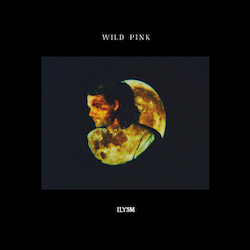 Singer and songwriter John Ross sounds reborn on ILYSM, Wild Pink’s follow-up to their 2021 breakout A Billion Little Lights. In a way, he was: Ross had already started writing the band’s fourth album when he was diagnosed with cancer, a battle that threatened to derail the LP, only to instead infuse it with urgent purpose. Ross pushed forward through the dark alongside a community of collaborators, co-producing the record with Justin Pizzoferrato (Pixies, Body/Head, Speedy Ortiz) and Peter Silberman of The Antlers, and enlisting contributions from J Mascis (“See You Better Now”), Julien Baker (“Hold My Hand”), Ryley Walker, Yasmin Williams, Samantha Crain and Ratboys’ Julia Steiner (the title track, among others). The songs they made together vibrate with wonder, as befitting of any pursuit that comes on the heels of an existential threat. The album is dreamy in a way that feels less like an escape and more like an adventure, as if Ross is seeing his world—and the people who populate it—through new eyes. —Scott Russell
Singer and songwriter John Ross sounds reborn on ILYSM, Wild Pink’s follow-up to their 2021 breakout A Billion Little Lights. In a way, he was: Ross had already started writing the band’s fourth album when he was diagnosed with cancer, a battle that threatened to derail the LP, only to instead infuse it with urgent purpose. Ross pushed forward through the dark alongside a community of collaborators, co-producing the record with Justin Pizzoferrato (Pixies, Body/Head, Speedy Ortiz) and Peter Silberman of The Antlers, and enlisting contributions from J Mascis (“See You Better Now”), Julien Baker (“Hold My Hand”), Ryley Walker, Yasmin Williams, Samantha Crain and Ratboys’ Julia Steiner (the title track, among others). The songs they made together vibrate with wonder, as befitting of any pursuit that comes on the heels of an existential threat. The album is dreamy in a way that feels less like an escape and more like an adventure, as if Ross is seeing his world—and the people who populate it—through new eyes. —Scott Russell
19. Grace Ives: Janky Star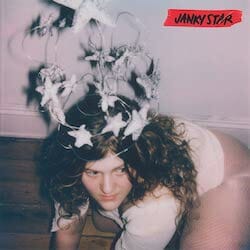 Grace Ives comes up for air on her latest record, Janky Star. The queen of charmingly claustrophobic beats, some of the angular synths, and punchy percussion from 2019’s 2nd resurface in her singles. However, she pairs this ear candy with pensive gaps that give her a chance to catch her breath. While she’s ornate as ever on tracks like “Loose,” other tracks like “Lullaby” are mellow in comparison as her vocals melt into a shimmering laze of electro-pop. The themes Ives touches on are as complex as her compositions, as she discusses sobriety, overdoses, escapism, attempting to slow down, and trying to find solid ground in a world that never stops spinning. —Samantha Sullivan
Grace Ives comes up for air on her latest record, Janky Star. The queen of charmingly claustrophobic beats, some of the angular synths, and punchy percussion from 2019’s 2nd resurface in her singles. However, she pairs this ear candy with pensive gaps that give her a chance to catch her breath. While she’s ornate as ever on tracks like “Loose,” other tracks like “Lullaby” are mellow in comparison as her vocals melt into a shimmering laze of electro-pop. The themes Ives touches on are as complex as her compositions, as she discusses sobriety, overdoses, escapism, attempting to slow down, and trying to find solid ground in a world that never stops spinning. —Samantha Sullivan
18. Julia Jacklin: PRE PLEASURE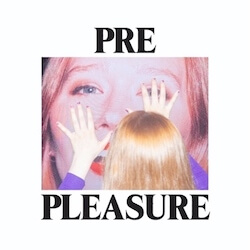 Julia Jacklin’s new album draws to a close with a plea: “Be careful with yourself,” she sings in the song of the same name. She begs someone to “please stop smoking” because she “want[s] your life to last a long time,” and later advises them to “make sure you have got a little savings” and “keep all our doctors appointments, give voice to our doubts.” As an early 30-something, the Australian singer is now, like so many millennials, faced with the realities of adulthood. “There’s nobody coming to save us,” she eventually sighs in the penultimate song of her third LP, PRE PLEASURE. While Jacklin is probably singing from the perspective of a worried friend or partner, “Be Careful With Yourself” is one of a few songs on the album that contain what sounds like advice from a concerned parent. And when her lyrics don’t lean towards the maternal, Jacklin is a sharp observer of her own internal life, hacking away at the crust of her neuroses and conditions—be they intrusive thoughts or caring too much—until some nugget of meaning is unearthed. For Jacklin, this involves a combination of revisiting childhood and confronting adulthood, a process that results in some of the Australian artist’s sharpest songwriting to date. —Ellen Johnson
Julia Jacklin’s new album draws to a close with a plea: “Be careful with yourself,” she sings in the song of the same name. She begs someone to “please stop smoking” because she “want[s] your life to last a long time,” and later advises them to “make sure you have got a little savings” and “keep all our doctors appointments, give voice to our doubts.” As an early 30-something, the Australian singer is now, like so many millennials, faced with the realities of adulthood. “There’s nobody coming to save us,” she eventually sighs in the penultimate song of her third LP, PRE PLEASURE. While Jacklin is probably singing from the perspective of a worried friend or partner, “Be Careful With Yourself” is one of a few songs on the album that contain what sounds like advice from a concerned parent. And when her lyrics don’t lean towards the maternal, Jacklin is a sharp observer of her own internal life, hacking away at the crust of her neuroses and conditions—be they intrusive thoughts or caring too much—until some nugget of meaning is unearthed. For Jacklin, this involves a combination of revisiting childhood and confronting adulthood, a process that results in some of the Australian artist’s sharpest songwriting to date. —Ellen Johnson
17. Porridge Radio: Waterslide, Diving Board, Ladder to the Sky For Brighton four-piece Porridge Radio, the fate of their sophomore album, Every Bad, was uncertain upon release. Just look at its March 13, 2020, street date and it’s obvious why one would worry about it being lost amidst the social upheaval. Fortunately, Every Bad was an album remarkable enough to break through the noise with some noise of its own: It established Porridge Radio as a deeply gifted band on the come-up. Led by Dana Margolin and composed of Georgie Stott, Sam Yardley and Maddie Ryall, they went from making a soft, subtle Bandcamp indie to building massive, vociferous slacker-rock songs. Their music is frenetic and unpredictable, melodic despite its cacophonous arrangements. Margolin’s voice, dark and powerful, is more often than not being pushed to the edges of its range, strained as though she’s trying to get every last drop of emotion out of each word she screams. As the record played and each song ended with growing chaos and incendiary performances, one could only speculate what power the next track would hold. It’s fair to wonder the same about a follow-up. When you come out swinging like Porridge Radio had, how long before you run out of steam? Waterslide, Diving Board, Ladder to the Sky, the band’s third album, sees them sidestep the trap that question contains. Waterslide is a masterpiece, finding Porridge Radio, and Margolin especially, in an elevated state. They’re eager to embrace uncertainty, leveling up in every regard, sacrificing none of the intensity that made them stand out. —Eric Bennett
For Brighton four-piece Porridge Radio, the fate of their sophomore album, Every Bad, was uncertain upon release. Just look at its March 13, 2020, street date and it’s obvious why one would worry about it being lost amidst the social upheaval. Fortunately, Every Bad was an album remarkable enough to break through the noise with some noise of its own: It established Porridge Radio as a deeply gifted band on the come-up. Led by Dana Margolin and composed of Georgie Stott, Sam Yardley and Maddie Ryall, they went from making a soft, subtle Bandcamp indie to building massive, vociferous slacker-rock songs. Their music is frenetic and unpredictable, melodic despite its cacophonous arrangements. Margolin’s voice, dark and powerful, is more often than not being pushed to the edges of its range, strained as though she’s trying to get every last drop of emotion out of each word she screams. As the record played and each song ended with growing chaos and incendiary performances, one could only speculate what power the next track would hold. It’s fair to wonder the same about a follow-up. When you come out swinging like Porridge Radio had, how long before you run out of steam? Waterslide, Diving Board, Ladder to the Sky, the band’s third album, sees them sidestep the trap that question contains. Waterslide is a masterpiece, finding Porridge Radio, and Margolin especially, in an elevated state. They’re eager to embrace uncertainty, leveling up in every regard, sacrificing none of the intensity that made them stand out. —Eric Bennett
16. Soccer Mommy: Sometimes, Forever Since her debut album Clean made waves in 2018, it’s been clear that Soccer Mommy’s Sophie Allison is an unstoppable creative force. Though little about that record sounds groundbreaking now, it wound up influencing legions of other young songwriters to try their hand at this specific kind of isolated, effusive indie rock. Soccer Mommy’s ascent also made it apparent that Allison’s aims were much higher. The more fleshed-out color theory saw Soccer Mommy’s music leaning more into Third Eye Blind-adjacent pop-rock but still forging its own path, often side-stepping common structures, like on the seven-minute-long “yellow is the color of her eyes.” In their recent live shows, Allison and her band have been blowing up their old songs, transforming each into something fuller, more distorted, and completely new. This more shoegaze-inspired sound is prominent on their third studio album, Sometimes, Forever. The most apparent change Soccer Mommy have made this time around is their enlisting of Daniel Lopatin as producer. Lopatin’s experimental electronic project, Oneohtrix Point Never, seems far enough removed that when this news broke, it inspired a lot of questions about what on Earth this record would sound like. Fortunately, Lopatin’s influence is positive, and Sometimes, Forever is endlessly more interesting because of his and Allison’s interplay. The album is a refreshing departure from the band’s prior work as Lopatin helps to twist their sound into new, more mangled shapes. —Eric Bennett
Since her debut album Clean made waves in 2018, it’s been clear that Soccer Mommy’s Sophie Allison is an unstoppable creative force. Though little about that record sounds groundbreaking now, it wound up influencing legions of other young songwriters to try their hand at this specific kind of isolated, effusive indie rock. Soccer Mommy’s ascent also made it apparent that Allison’s aims were much higher. The more fleshed-out color theory saw Soccer Mommy’s music leaning more into Third Eye Blind-adjacent pop-rock but still forging its own path, often side-stepping common structures, like on the seven-minute-long “yellow is the color of her eyes.” In their recent live shows, Allison and her band have been blowing up their old songs, transforming each into something fuller, more distorted, and completely new. This more shoegaze-inspired sound is prominent on their third studio album, Sometimes, Forever. The most apparent change Soccer Mommy have made this time around is their enlisting of Daniel Lopatin as producer. Lopatin’s experimental electronic project, Oneohtrix Point Never, seems far enough removed that when this news broke, it inspired a lot of questions about what on Earth this record would sound like. Fortunately, Lopatin’s influence is positive, and Sometimes, Forever is endlessly more interesting because of his and Allison’s interplay. The album is a refreshing departure from the band’s prior work as Lopatin helps to twist their sound into new, more mangled shapes. —Eric Bennett
15. Cate Le Bon: Pompeii Cate Le Bon’s been called an absurdist—a weirdo, an alien—because her music is industrial and her songwriting is a product of deliberate philosophical interrogation in an era of impatient desire for commodified answers. She works among envelope-pushers like black midi and The Spirit of the Beehive, acts existing on a margin where technical skill and inventive, experimental visions intersect. She’s not quite as singer/songwriter-oriented as Weyes Blood; her electronic compositions aren’t droney or balmy like Ellen Arkbro’s; she’s a Dadaist at heart, an active practitioner of purposefully off-kilter soundscapes and contrarian responses to traditional art of the era. But on Pompeii, Le Bon completely ruptures the mold, using the record to divorce herself from the current subculture of flashy 1980s new wave ripoffs by tackling similar themes of religious affection, but through a subdued, meticulous approach. The LP’s tonal landscape derives from Japanese city pop, Depeche Mode synths, jazz percussion and the Dada bleakness of Cabaret Voltaire. Stella Mozgawa, a frequent collaborator of Le Bon, Courtney Barnett and Kurt Vile, brings patient percussion to the compositions; Stephen Black’s saxophone sounds like a glossy, beautiful earthquake. Samur Khouja’s production energizes Le Bon to lean far into a paradox: ancient texts germinating into contemporary lyricism. —Matt Mitchell
Cate Le Bon’s been called an absurdist—a weirdo, an alien—because her music is industrial and her songwriting is a product of deliberate philosophical interrogation in an era of impatient desire for commodified answers. She works among envelope-pushers like black midi and The Spirit of the Beehive, acts existing on a margin where technical skill and inventive, experimental visions intersect. She’s not quite as singer/songwriter-oriented as Weyes Blood; her electronic compositions aren’t droney or balmy like Ellen Arkbro’s; she’s a Dadaist at heart, an active practitioner of purposefully off-kilter soundscapes and contrarian responses to traditional art of the era. But on Pompeii, Le Bon completely ruptures the mold, using the record to divorce herself from the current subculture of flashy 1980s new wave ripoffs by tackling similar themes of religious affection, but through a subdued, meticulous approach. The LP’s tonal landscape derives from Japanese city pop, Depeche Mode synths, jazz percussion and the Dada bleakness of Cabaret Voltaire. Stella Mozgawa, a frequent collaborator of Le Bon, Courtney Barnett and Kurt Vile, brings patient percussion to the compositions; Stephen Black’s saxophone sounds like a glossy, beautiful earthquake. Samur Khouja’s production energizes Le Bon to lean far into a paradox: ancient texts germinating into contemporary lyricism. —Matt Mitchell
14. The Beths: Expert in a Dying Field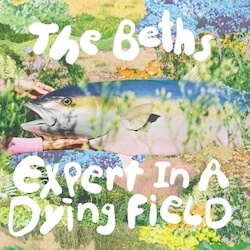 Close friends and lovers have the privilege of sharing an exclusive language. And while the joy of knowing another so acutely feels unmatched, the risk of loss runs even higher—if the love affair fizzles or the friendship fades, not only is an alliance broken, but also an entire empire shattered with it. But like an anthropologist who specializes in a dead language or a long-extinct civilization, the parties to the ex-relationship are liable to remain fluent in that shared tongue—they just have no one to speak it with. The Beths’ Elizabeth Stokes introduces the perfect metaphor for this tragedy on the first track of the band’s latest LP: “Love is learned over time / ‘til you’re an expert in a dying field.” Stokes spends the rest of the band’s electrifying third studio LP, also called Expert in a Dying Field, explaining exactly how it feels when you’re that lonely expert, and more specifically how it feels to weather such a scenario in the year 2022, all while cranking out the catchy-as-hell pop-rock melodies The Beths have become known for since the release of their breakout 2018 debut Future Me Hates Me. —Ellen Johnson
Close friends and lovers have the privilege of sharing an exclusive language. And while the joy of knowing another so acutely feels unmatched, the risk of loss runs even higher—if the love affair fizzles or the friendship fades, not only is an alliance broken, but also an entire empire shattered with it. But like an anthropologist who specializes in a dead language or a long-extinct civilization, the parties to the ex-relationship are liable to remain fluent in that shared tongue—they just have no one to speak it with. The Beths’ Elizabeth Stokes introduces the perfect metaphor for this tragedy on the first track of the band’s latest LP: “Love is learned over time / ‘til you’re an expert in a dying field.” Stokes spends the rest of the band’s electrifying third studio LP, also called Expert in a Dying Field, explaining exactly how it feels when you’re that lonely expert, and more specifically how it feels to weather such a scenario in the year 2022, all while cranking out the catchy-as-hell pop-rock melodies The Beths have become known for since the release of their breakout 2018 debut Future Me Hates Me. —Ellen Johnson
13. Sudan Archives: Natural Brown Prom Queen If there’s one thing L.A.-via-Cincinnati artist Sudan Archives isn’t, it’s average—and on Natural Brown Prom Queen, the follow-up to her 2019 full-length debut Athena, she’s glad to remind you of that herself. “You don’t need those women, they are average,” she coaxes over the sleek disco-soul of opener “Home Maker,” while on the subsequent “Natural Brown Prom Queen (Topless),” she repeats, ”’Cause I’m not average,” backed by rapid handclaps and booming bass. And it is a reminder, as much as it’s a self-fulfilling prophecy—Paste hailed the singer/songwriter, producer and violinist born Brittney Parks as the Best of What’s Next in 2017, on the strength of her self-titled debut EP alone. At 18 tracks and nearly an hour, Natural Brown Prom Queen finds Sudan Archives at her most ambitious, as well as her most introspective, welcoming listeners into the places and experiences that shaped her special talent even as she unleashes it. You could say it’s not your average album. —Scott Russell
If there’s one thing L.A.-via-Cincinnati artist Sudan Archives isn’t, it’s average—and on Natural Brown Prom Queen, the follow-up to her 2019 full-length debut Athena, she’s glad to remind you of that herself. “You don’t need those women, they are average,” she coaxes over the sleek disco-soul of opener “Home Maker,” while on the subsequent “Natural Brown Prom Queen (Topless),” she repeats, ”’Cause I’m not average,” backed by rapid handclaps and booming bass. And it is a reminder, as much as it’s a self-fulfilling prophecy—Paste hailed the singer/songwriter, producer and violinist born Brittney Parks as the Best of What’s Next in 2017, on the strength of her self-titled debut EP alone. At 18 tracks and nearly an hour, Natural Brown Prom Queen finds Sudan Archives at her most ambitious, as well as her most introspective, welcoming listeners into the places and experiences that shaped her special talent even as she unleashes it. You could say it’s not your average album. —Scott Russell
12. Ethel Cain: Preacher’s Daughter Ethel Cain is on a brilliant ascent. Last year’s Inbred EP solidified her position as a force to be witnessed in American music as she wrestled with the uniquely Southern version of the American dream that shaped her young life. The divinity of gospel, the audacity of heartland rock and the frankness of 2010s Tumblr-era pop collide into an arresting narrative spectacle, portraying the experience of a woman who is intimately familiar with depraved violence, the gospel and the strict social hierarchies of the South and the Plains. The EPs have only revealed a portion of Cain’s lore, but on her whopping 75-minute debut LP Preacher’s Daughter, Ethel Cain, the narrative figure and the musical sensation, manifests a breathtaking account of a woman, her mysterious partner and her troubled family. Much as Inbred mangled Americana, ambient folk and slowcore into a terrifying sonic experiment, Preacher’s Daughter is a sound all its own. Imagine what would happen if singers as familiar as Bruce Springsteen or Nichole Nordeman were backed by Midwife or Sunn O))). The glamorous and aphrodisiac sound of Lana Del Rey is undoubtedly there, but the thematic and instrumental elements on Preacher’s Daughter possess a weightiness and impulse away from ironic glamorization of the American dream and toward outright criticism that render the comparison only so relevant. At times the record throbs with a noisy, immersive intensity before transitioning into the kind of epic guitar solos that decorated the cult of rock personalities in generations past. This collision of dark ambient and Def Leppard is uniquely American in the best way conceivable. —Devon Chodzin
Ethel Cain is on a brilliant ascent. Last year’s Inbred EP solidified her position as a force to be witnessed in American music as she wrestled with the uniquely Southern version of the American dream that shaped her young life. The divinity of gospel, the audacity of heartland rock and the frankness of 2010s Tumblr-era pop collide into an arresting narrative spectacle, portraying the experience of a woman who is intimately familiar with depraved violence, the gospel and the strict social hierarchies of the South and the Plains. The EPs have only revealed a portion of Cain’s lore, but on her whopping 75-minute debut LP Preacher’s Daughter, Ethel Cain, the narrative figure and the musical sensation, manifests a breathtaking account of a woman, her mysterious partner and her troubled family. Much as Inbred mangled Americana, ambient folk and slowcore into a terrifying sonic experiment, Preacher’s Daughter is a sound all its own. Imagine what would happen if singers as familiar as Bruce Springsteen or Nichole Nordeman were backed by Midwife or Sunn O))). The glamorous and aphrodisiac sound of Lana Del Rey is undoubtedly there, but the thematic and instrumental elements on Preacher’s Daughter possess a weightiness and impulse away from ironic glamorization of the American dream and toward outright criticism that render the comparison only so relevant. At times the record throbs with a noisy, immersive intensity before transitioning into the kind of epic guitar solos that decorated the cult of rock personalities in generations past. This collision of dark ambient and Def Leppard is uniquely American in the best way conceivable. —Devon Chodzin
11. Bartees Strange: Farm to Table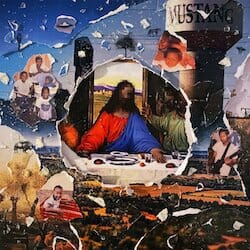 It’s his musical elasticity that has earned Bartees Strange universal praise and a devoted fanbase. Although he released a covers EP of The National songs months before his debut, it was his debut album, 2020’s Live Forever, that ultimately launched him into a different league. He understood that the record was going to change his life for better or worse, and he used this uncertainty as fuel for his next project. “I wanted to preserve the brain I had in that moment, ” he said in a recent interview. “If everyone hated Live Forever, I was going to be fucked up. If everyone loved it, I was going to be fucked up.” To preserve his artistic spirit, he began tracking the new record just a day shy of Live Forever’s release. Initially an EP, Farm to Table quickly metamorphosed into a full-blown LP. Similar to the way in which the Super Mario Galaxy team kept churning out brilliant level ideas and used them for a sequel, Farm to Table is yet another showcase for Bartees’ versatile excellence. —Grant Sharples
It’s his musical elasticity that has earned Bartees Strange universal praise and a devoted fanbase. Although he released a covers EP of The National songs months before his debut, it was his debut album, 2020’s Live Forever, that ultimately launched him into a different league. He understood that the record was going to change his life for better or worse, and he used this uncertainty as fuel for his next project. “I wanted to preserve the brain I had in that moment, ” he said in a recent interview. “If everyone hated Live Forever, I was going to be fucked up. If everyone loved it, I was going to be fucked up.” To preserve his artistic spirit, he began tracking the new record just a day shy of Live Forever’s release. Initially an EP, Farm to Table quickly metamorphosed into a full-blown LP. Similar to the way in which the Super Mario Galaxy team kept churning out brilliant level ideas and used them for a sequel, Farm to Table is yet another showcase for Bartees’ versatile excellence. —Grant Sharples
10. MJ Lenderman: Boat Songs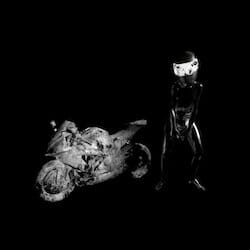 With the widely acclaimed Boat Songs under his belt, Asheville, North Carolina’s MJ Lenderman has now broken out as both a Wednesday member and a solo artist. The opening 1-2 punch of “Hangover Game,” which presents an alternate theory about Michael Jordan’s legendary “flu game,” and “You Have Bought Yourself a Boat,” in which somebody buys a boat, will lock you into the latest from Lenderman, whose shaggy alt-country sound belies thoughtful, detailed and down-to-earth songwriting, through which his sense of humor also shines. There are odes to “Dan Marino” and “Six Flags” here, conjuring any Southerner’s idea of a good time. Lenderman says in press materials that his new songs, the first he’s recorded in a professional studio, “chase fulfillment and happiness” above all else. In a time when the world feels particularly precarious, there’s arguably no better pursuit than that. —Scott Russell
With the widely acclaimed Boat Songs under his belt, Asheville, North Carolina’s MJ Lenderman has now broken out as both a Wednesday member and a solo artist. The opening 1-2 punch of “Hangover Game,” which presents an alternate theory about Michael Jordan’s legendary “flu game,” and “You Have Bought Yourself a Boat,” in which somebody buys a boat, will lock you into the latest from Lenderman, whose shaggy alt-country sound belies thoughtful, detailed and down-to-earth songwriting, through which his sense of humor also shines. There are odes to “Dan Marino” and “Six Flags” here, conjuring any Southerner’s idea of a good time. Lenderman says in press materials that his new songs, the first he’s recorded in a professional studio, “chase fulfillment and happiness” above all else. In a time when the world feels particularly precarious, there’s arguably no better pursuit than that. —Scott Russell
9. Spoon: Lucifer On The Sofa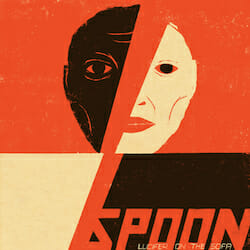 It’s hard to think of many bands who have been as consistently excellent for as long as Spoon have. For close to 30 years now, the Austin group have managed to maintain a restless, unsettled energy, expanding their sonic palette and transcending their obvious early influences as Britt Daniel, Jim Eno and a shifting lineup of collaborators honed a distinctive sound all their own. Spoon haven’t eased off a bit on Lucifer on the Sofa. The band’s 10th album is also its first since 2017, and while it’s been a while since Spoon have had anything to prove, they still sound hungry. Indeed, Daniel has said that the title of the album refers to battling against “the bitterness, or lack of motivation or desperation that keeps you down and makes you do nothing or self-indulge.” Suffice to say that lack of motivation wasn’t a problem here. Lucifer on the Sofa is taut and textured, mixing trebly, caustic guitar licks with piano and big, propulsive currents of rhythm. Sometimes there’s a potent urgency underpinning the songs: “Feels Alright,” for example, opens with an abrading descending guitar riff and a boom-bap beat, then pivots into a vamp right on the edge of funk, with a lot of movement in the bassline. Elsewhere, “The Hardest Cut” is a tough boogie that bubbles and seethes with guitars over a relentless, clapping beat. There’s more than a hint here of another Texas stalwart, ZZ Top, but refracted through Spoon’s own particular sensibility. If Lucifer has taken up a position on their sofa, Spoon have no intention of sitting there and keeping him company. —Eric R. Danton
It’s hard to think of many bands who have been as consistently excellent for as long as Spoon have. For close to 30 years now, the Austin group have managed to maintain a restless, unsettled energy, expanding their sonic palette and transcending their obvious early influences as Britt Daniel, Jim Eno and a shifting lineup of collaborators honed a distinctive sound all their own. Spoon haven’t eased off a bit on Lucifer on the Sofa. The band’s 10th album is also its first since 2017, and while it’s been a while since Spoon have had anything to prove, they still sound hungry. Indeed, Daniel has said that the title of the album refers to battling against “the bitterness, or lack of motivation or desperation that keeps you down and makes you do nothing or self-indulge.” Suffice to say that lack of motivation wasn’t a problem here. Lucifer on the Sofa is taut and textured, mixing trebly, caustic guitar licks with piano and big, propulsive currents of rhythm. Sometimes there’s a potent urgency underpinning the songs: “Feels Alright,” for example, opens with an abrading descending guitar riff and a boom-bap beat, then pivots into a vamp right on the edge of funk, with a lot of movement in the bassline. Elsewhere, “The Hardest Cut” is a tough boogie that bubbles and seethes with guitars over a relentless, clapping beat. There’s more than a hint here of another Texas stalwart, ZZ Top, but refracted through Spoon’s own particular sensibility. If Lucifer has taken up a position on their sofa, Spoon have no intention of sitting there and keeping him company. —Eric R. Danton
8. Beyoncé: Renaissance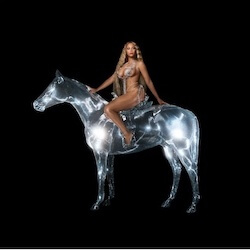 Renaissance is an appropriate title for the dance-forward release from R&B superstar Beyoncé as she finally takes a step forward and explores dance music in all of its forms. At its core, the album is a touching love letter to Black gay culture as a tribute to the singer’s uncle Jonny. Beyoncé follows the trend of experimenting far outside of her realm, lending her silky vocals and sexy whispers to jittery Memphis rap samples, dancehall drums and grandiose diva house beats. Renaissance doesn’t take itself too seriously, allowing the goddess herself to have a bit of fun and create infectious dance music. —Jade Gomez
Renaissance is an appropriate title for the dance-forward release from R&B superstar Beyoncé as she finally takes a step forward and explores dance music in all of its forms. At its core, the album is a touching love letter to Black gay culture as a tribute to the singer’s uncle Jonny. Beyoncé follows the trend of experimenting far outside of her realm, lending her silky vocals and sexy whispers to jittery Memphis rap samples, dancehall drums and grandiose diva house beats. Renaissance doesn’t take itself too seriously, allowing the goddess herself to have a bit of fun and create infectious dance music. —Jade Gomez
7. Angel Olsen: Big Time On Big Time, the grand, burgeoning, symphonic gestures of Angel Olsen’s last three studio LPs are gone, substituted with Phases-era, minimalistic, pedal steel-tinged sobcore and dreamy twang. It’s a one-woman show, a prize fight where the challenger no-showed. Big Time isn’t a bummer opera; it’s a last-call, honky-tonk bar encore—and it rules. On opener “All The Good Times,” Olsen surrenders the album’s thesis, declaring that she’s done making excuses for everyone else. “I can’t say that I’m sorry when I don’t feel so wrong anymore,” she sings. The horn arrangements here are subtle, and Drew Erickson’s organ trembles slightly beneath Olsen’s vocals. It’s an announcement, a warning, that this is a new era of her songwriting. —Matt Mitchell
On Big Time, the grand, burgeoning, symphonic gestures of Angel Olsen’s last three studio LPs are gone, substituted with Phases-era, minimalistic, pedal steel-tinged sobcore and dreamy twang. It’s a one-woman show, a prize fight where the challenger no-showed. Big Time isn’t a bummer opera; it’s a last-call, honky-tonk bar encore—and it rules. On opener “All The Good Times,” Olsen surrenders the album’s thesis, declaring that she’s done making excuses for everyone else. “I can’t say that I’m sorry when I don’t feel so wrong anymore,” she sings. The horn arrangements here are subtle, and Drew Erickson’s organ trembles slightly beneath Olsen’s vocals. It’s an announcement, a warning, that this is a new era of her songwriting. —Matt Mitchell
6. Soul Glo: Diaspora Problems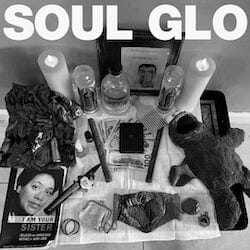 The new album by Philadelphia’s Soul Glo should be viewed as nothing short of a new tectonic shift in the world of hardcore punk. Listening to Diaspora Problems, you get the sense that Soul Glo are less concerned with getting the opportunity to perform a medley of new tunes on a prestigious late-night spot than hanging behind to dismantle the stale conventions of the often white male-dominated underground scene they cut their teeth in. And my goodness, do Soul Glo deliver. The rage contained within the 12 songs on Diaspora Problems is potent enough to launch anyone clinging to the status quo or softening of aggressive music out of an airlock into space to make way for a better tomorrow. Soul Glo have caused a clearing in the forest with an album so boundless in its creativity that it cannot be ignored. This is the shape of hardcore that we had been promised. —Pat King
The new album by Philadelphia’s Soul Glo should be viewed as nothing short of a new tectonic shift in the world of hardcore punk. Listening to Diaspora Problems, you get the sense that Soul Glo are less concerned with getting the opportunity to perform a medley of new tunes on a prestigious late-night spot than hanging behind to dismantle the stale conventions of the often white male-dominated underground scene they cut their teeth in. And my goodness, do Soul Glo deliver. The rage contained within the 12 songs on Diaspora Problems is potent enough to launch anyone clinging to the status quo or softening of aggressive music out of an airlock into space to make way for a better tomorrow. Soul Glo have caused a clearing in the forest with an album so boundless in its creativity that it cannot be ignored. This is the shape of hardcore that we had been promised. —Pat King
5. Black Country, New Road: Ants from Up There When Black Country, New Road released their debut album For the first time last February, they’d been sitting on the material for at least a year; songs like “Athens, France” and “Sunglasses,” though ultimately reworked on the album, had already been out since 2019. The group described For the first time as the summation of their first 18 months as a band, a helpful framing for such intricate, yet manic work. Last September, the band confirmed they had already finished a follow-up, and began playing “Bread Song” and “Basketball Shoes’’ during their live sets. These would become parts of Ants From Up There, the group’s sophomore effort. Released just 364 days later, it was an incredibly quick turnaround for the London septet, a result of their remarkable productivity. Ants From Up There feels like the work of a band figuring itself out. While they may not use the term themselves, it’s hard to argue that Black Country, New Road can’t be called a jam band. Try as they might to create short, digestible tracks, they still go long; they’re never married to their songs being presented in just one way, and embrace improvisation. Sure, they come across more self-serious than the stereotypical jam band, but all the markers are there. This is a record that sees Black Country, New Road reestablishing themselves. Having been lauded by nearly every outlet following their debut, you get the sense the band are trying to reset expectations: Buried beneath their own laurels, they’re not afraid to shake them off. —Eric Bennett
When Black Country, New Road released their debut album For the first time last February, they’d been sitting on the material for at least a year; songs like “Athens, France” and “Sunglasses,” though ultimately reworked on the album, had already been out since 2019. The group described For the first time as the summation of their first 18 months as a band, a helpful framing for such intricate, yet manic work. Last September, the band confirmed they had already finished a follow-up, and began playing “Bread Song” and “Basketball Shoes’’ during their live sets. These would become parts of Ants From Up There, the group’s sophomore effort. Released just 364 days later, it was an incredibly quick turnaround for the London septet, a result of their remarkable productivity. Ants From Up There feels like the work of a band figuring itself out. While they may not use the term themselves, it’s hard to argue that Black Country, New Road can’t be called a jam band. Try as they might to create short, digestible tracks, they still go long; they’re never married to their songs being presented in just one way, and embrace improvisation. Sure, they come across more self-serious than the stereotypical jam band, but all the markers are there. This is a record that sees Black Country, New Road reestablishing themselves. Having been lauded by nearly every outlet following their debut, you get the sense the band are trying to reset expectations: Buried beneath their own laurels, they’re not afraid to shake them off. —Eric Bennett
4. Wet Leg: Wet Leg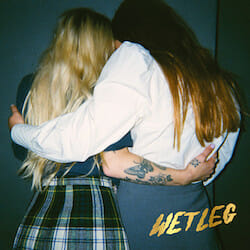 If Wet Leg’s only achievement had been demonstrating the correct pronunciation of a popular seating option with their 2021 single “Chaise Longue,” that would have been enough. The song is droll and hooky, a blast of anarchic energy packed into three-ish minutes of deadpan vocals and careening guitars. Turns out that’s not their only achievement. In fact, “Chaise Longue” is basically a setup for Wet Leg’s self-titled first album, a gleefully bawdy, often adrenalizing exploration of ennui, lust and catharsis. It can be tempting to think (or fear) that a band that debuts with a funny song is destined to be a gimmick, but Wet Leg principles Rhian Teasdale and Hester Chambers dispel any such concern with a display of range and depth on these 12 songs. They do angular indie rock with precise, metronomic vocals on “Angelica,” there’s a dance-y beat pushing a bright melody on “Ur Mom” as buzzsaw guitars come and go, and “Supermarket” winds around on shambling guitars and loose-limbed backing vocals, like some slacker-rock anthem from people who aren’t really slackers at all. —Eric R. Danton
If Wet Leg’s only achievement had been demonstrating the correct pronunciation of a popular seating option with their 2021 single “Chaise Longue,” that would have been enough. The song is droll and hooky, a blast of anarchic energy packed into three-ish minutes of deadpan vocals and careening guitars. Turns out that’s not their only achievement. In fact, “Chaise Longue” is basically a setup for Wet Leg’s self-titled first album, a gleefully bawdy, often adrenalizing exploration of ennui, lust and catharsis. It can be tempting to think (or fear) that a band that debuts with a funny song is destined to be a gimmick, but Wet Leg principles Rhian Teasdale and Hester Chambers dispel any such concern with a display of range and depth on these 12 songs. They do angular indie rock with precise, metronomic vocals on “Angelica,” there’s a dance-y beat pushing a bright melody on “Ur Mom” as buzzsaw guitars come and go, and “Supermarket” winds around on shambling guitars and loose-limbed backing vocals, like some slacker-rock anthem from people who aren’t really slackers at all. —Eric R. Danton
3. Alvvays: Blue Rev Perhaps the single biggest no-brainer on this list is Blue Rev, the first album from dream-pop standard bearers Alvvays since 2017’s immaculate Antisocialites. The summer release of its lead single and opener “Pharmacist” set an expectation the band’s third album is now paying off, promising the most challenging, yet characteristically intoxicating music of the Toronto quintet’s career. Where previous Alvvays albums resembled precious gems the band dug up fully formed and placed on pedestals with care, Blue Rev feels more as if we’re stepping into their world and excavating alongside them. Molly Rankin’s halcyon vocal melodies are layered alongside synth and guitar textures more compelling and explosively spontaneous than any the band have crafted, with Grammy-winning producer Shawn Everett (The War on Drugs, Kacey Musgraves) helping to warp Alvvays’ sound into thrillingly topsy-turvy forms. Listening to Blue Rev is like seeing a beautiful face in a funhouse mirror—good luck looking away. —Scott Russell
Perhaps the single biggest no-brainer on this list is Blue Rev, the first album from dream-pop standard bearers Alvvays since 2017’s immaculate Antisocialites. The summer release of its lead single and opener “Pharmacist” set an expectation the band’s third album is now paying off, promising the most challenging, yet characteristically intoxicating music of the Toronto quintet’s career. Where previous Alvvays albums resembled precious gems the band dug up fully formed and placed on pedestals with care, Blue Rev feels more as if we’re stepping into their world and excavating alongside them. Molly Rankin’s halcyon vocal melodies are layered alongside synth and guitar textures more compelling and explosively spontaneous than any the band have crafted, with Grammy-winning producer Shawn Everett (The War on Drugs, Kacey Musgraves) helping to warp Alvvays’ sound into thrillingly topsy-turvy forms. Listening to Blue Rev is like seeing a beautiful face in a funhouse mirror—good luck looking away. —Scott Russell
2. Alex G: God Save the Animals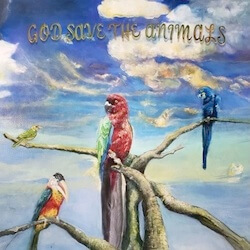 Alex G’s work can feel impossible to categorize. When we try to put a label on what he’s doing, those labels feel insufficient. Sure, Rocket is the “folk” record, and House of Sugar is “electronic”—neither tag is inaccurate, but they each come with an asterisk. In truth, Alex G’s brand of indie rock is a mix of several facets that he contorts on a whim. Sometimes he may put a heavier focus on twangy guitars and string arrangements, other times doubling down on his drum machines and vocal manipulation. The result is always different, but the method remains mostly the same. His latest record, God Save the Animals, falls somewhere in between the sonic palettes of its two predecessors, most reminiscent of 2015’s steady-handed Beach Music. While moments on Animals nod at Elliott Smith’s yearning indie rock and others bring to mind Aphex Twin’s uncomfortable, twisted soundscapes, it never skews too far in any one direction. What is new this time around is an explicit appreciation for the substance of, and creative process behind, pop music. —Eric Bennett
Alex G’s work can feel impossible to categorize. When we try to put a label on what he’s doing, those labels feel insufficient. Sure, Rocket is the “folk” record, and House of Sugar is “electronic”—neither tag is inaccurate, but they each come with an asterisk. In truth, Alex G’s brand of indie rock is a mix of several facets that he contorts on a whim. Sometimes he may put a heavier focus on twangy guitars and string arrangements, other times doubling down on his drum machines and vocal manipulation. The result is always different, but the method remains mostly the same. His latest record, God Save the Animals, falls somewhere in between the sonic palettes of its two predecessors, most reminiscent of 2015’s steady-handed Beach Music. While moments on Animals nod at Elliott Smith’s yearning indie rock and others bring to mind Aphex Twin’s uncomfortable, twisted soundscapes, it never skews too far in any one direction. What is new this time around is an explicit appreciation for the substance of, and creative process behind, pop music. —Eric Bennett
1. Big Thief: Dragon New Warm Mountain I Believe In You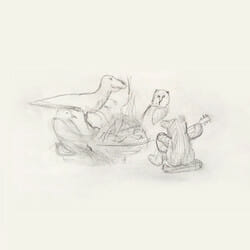 What great bands often do when they realize they’re at the peak of their powers is make a double album. The first year of the pandemic allowed Big Thief the time and space to indulge this hubristic tradition. Faced with their longest break from touring since 2016’s Masterpiece came out, they wrote at a feverish pace and spent five months recording in four distinct sessions—in upstate New York, in California, in the Rocky Mountains, and in Tucson—with four different engineers. By the last session, they had generated some 45 completed songs. The result is Dragon New Warm Mountain I Believe in You, a freewheeling creature that vibrates with the restlessness and ramshackle intimacy that have long distinguished this band, blown out to a new scale. It is an uncommonly warm and generous record, 20 songs in all—flitting from campfire folk (“Change”) to clanging cosmic rumination (“Time Escaping”) to countrified hoedown (“Spud Infinity”) in its first three tracks alone—and it solidifies Adrianne Lenker’s place as one of the greatest songwriters to emerge in the last five years. Dragon New Warm Mountain I Believe in You is not really an indie-rock album, at least not in the way that Two Hands was. There is no successor to “Not” here, nothing that belongs on a mid-2010s indie mood board. Instead, it revels in the earthy, joyously uncool tones of a ’70s hippie-folk record excavated from a garage sale. It is Big Thief’s loosest album and most ambitious album all at once. —Zach Schonfeld
What great bands often do when they realize they’re at the peak of their powers is make a double album. The first year of the pandemic allowed Big Thief the time and space to indulge this hubristic tradition. Faced with their longest break from touring since 2016’s Masterpiece came out, they wrote at a feverish pace and spent five months recording in four distinct sessions—in upstate New York, in California, in the Rocky Mountains, and in Tucson—with four different engineers. By the last session, they had generated some 45 completed songs. The result is Dragon New Warm Mountain I Believe in You, a freewheeling creature that vibrates with the restlessness and ramshackle intimacy that have long distinguished this band, blown out to a new scale. It is an uncommonly warm and generous record, 20 songs in all—flitting from campfire folk (“Change”) to clanging cosmic rumination (“Time Escaping”) to countrified hoedown (“Spud Infinity”) in its first three tracks alone—and it solidifies Adrianne Lenker’s place as one of the greatest songwriters to emerge in the last five years. Dragon New Warm Mountain I Believe in You is not really an indie-rock album, at least not in the way that Two Hands was. There is no successor to “Not” here, nothing that belongs on a mid-2010s indie mood board. Instead, it revels in the earthy, joyously uncool tones of a ’70s hippie-folk record excavated from a garage sale. It is Big Thief’s loosest album and most ambitious album all at once. —Zach Schonfeld
Listen to Paste’s Best Albums of 2022 playlist on Spotify here.
GET PASTE RIGHT IN YOUR INBOX
The best music, movies, TV, books, comedy and more.
-

-

-

-

-

-

-

-

-

-

-

-

-

-

-

-

-

-

-

-

-

-

-

-

-

-

-

-

-

-

-

-

-

-

-

-

-

-

-

-








































